While desktop operating systems have traditionally been tied to mouse and keyboard, Windows 8 (and subsequently Windows 8.1) has also embraced touch. In addition to a wealth of touchscreen-toting laptops, there are now a range of hybrid machines that blur the line between tablet and notebook, with the goal of providing the best of both experiences. Join Gizmag, as we compare the top Windows hybrids, aka convertibles or 2-in-1s.
Update: This post omitted some of the latest models, but you can check out our updated Windows 2-in-2 Comparison Guide for late 2014 to catch up on the pre-holiday releases.
While it's getting harder to distinguish the latest smartphones and tablets, the Windows 2-in-1 space is routinely imaginative, and filled with unusual solutions such as Dell’s “easel” display on the XPS 12. Admittedly, most systems here opt for either a detachable (like the Microsoft Surface) or folding (like the Lenovo Yoga) form factor, but other key differences make picking a hybrid tablet/notebook one of the most difficult decisions in consumer tech.
Luckily, Gizmag is here to help. It would be damn near impossible for us to cover every system out there, but we've picked nine machines that represent a range of form factors, specs and price points:
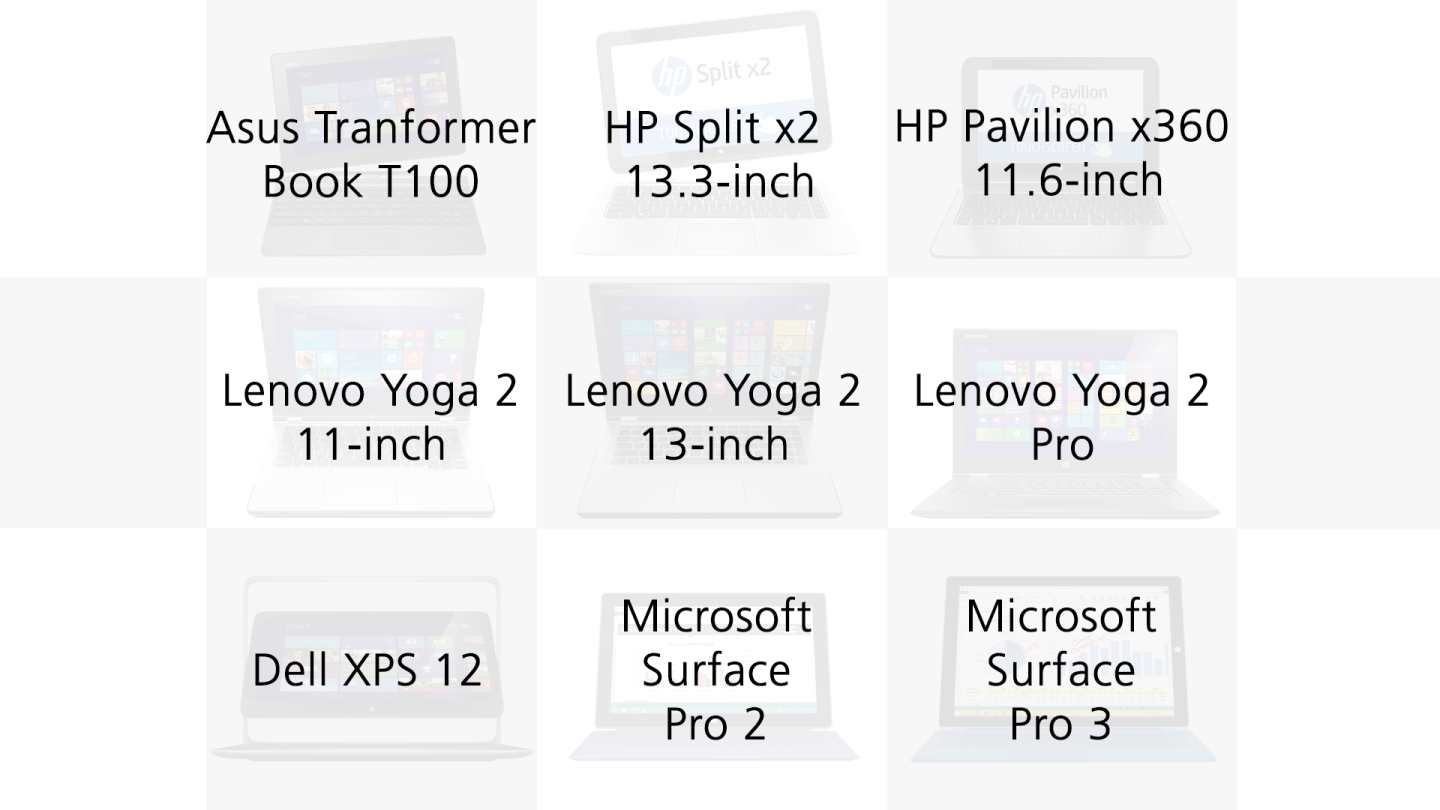
These nine 2-in-1s all run the full Windows 8.1 operating system – including desktop apps (in other words, no Windows RT devices here). The table above shows not only the models we’ll be looking at, but also where you can find them in this comparison's visuals. If you forget which model is which, you can just scroll back up here to get a refresher.
Without further ado, let’s dive into Gizmag's Windows 2-in-1 Comparison Guide.
Size

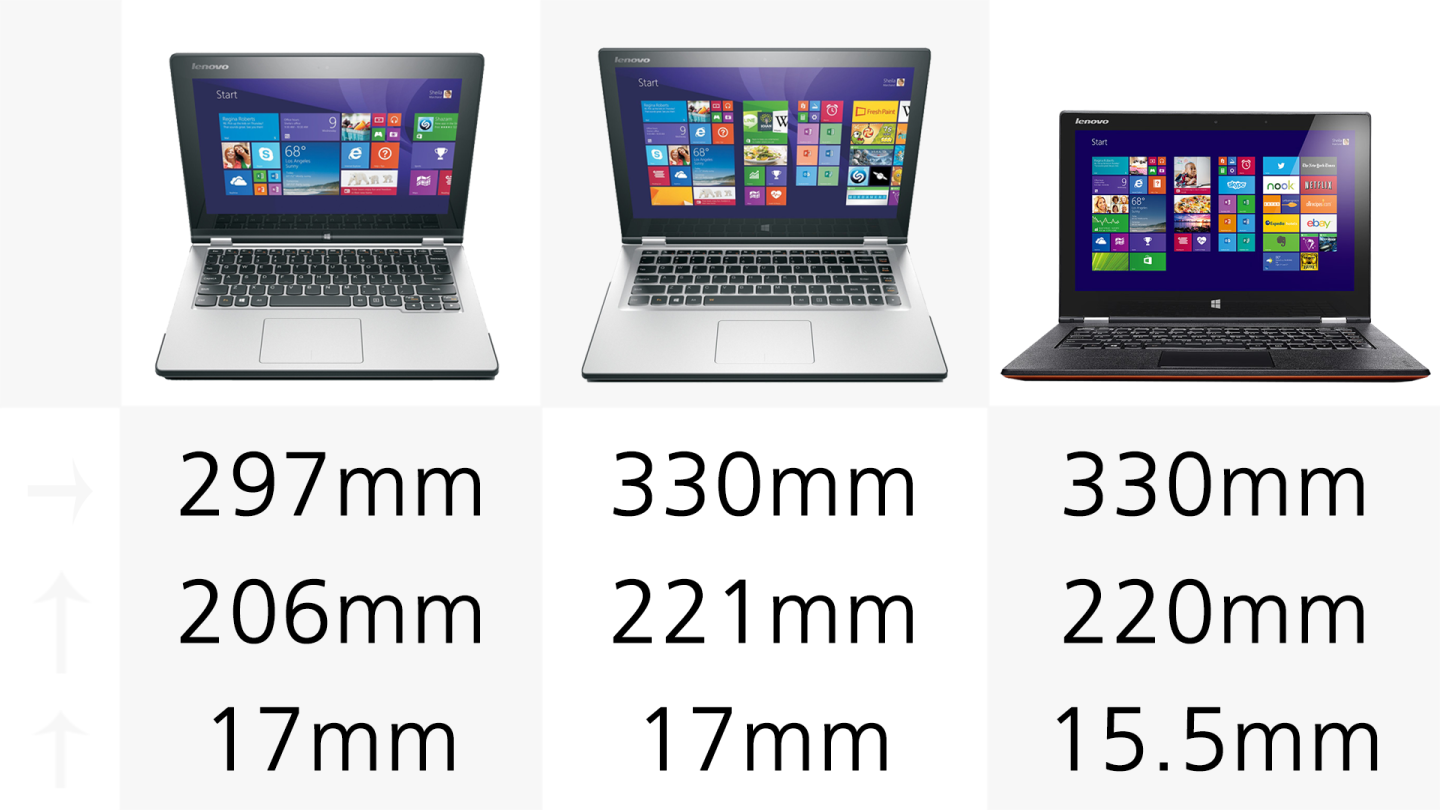
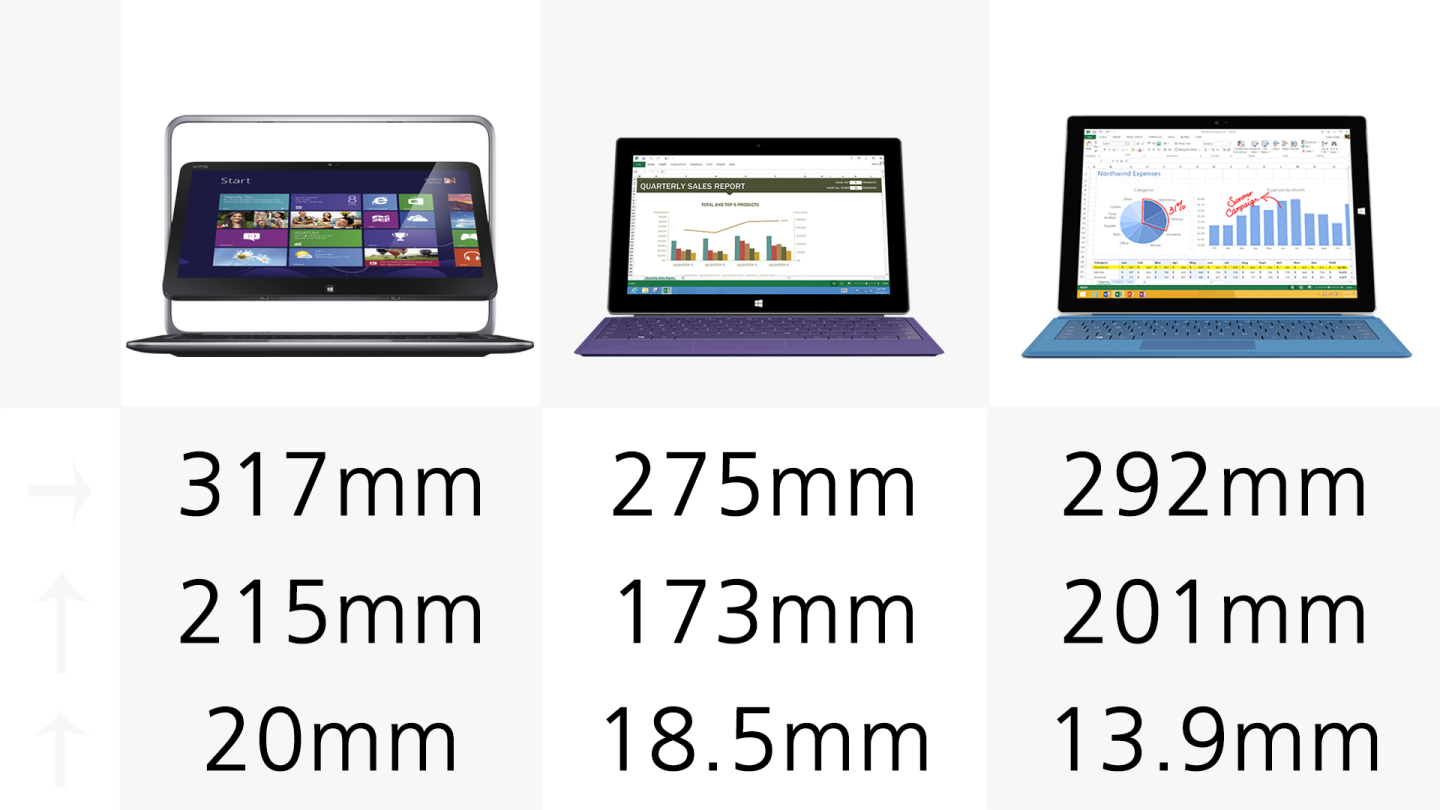
There’s a fair bit of variation when it comes to system dimensions. The Asus Transformer Book boasts the smallest footprint of the bunch, but when docked with its keyboard, it’s also the thickest device here. Despite having a larger display and beefier internals, Microsoft’s Surface Pro 3 hybrid is 46 percent thinner than the Asus machine.
You'll want to note that, in the case of devices with detachable keyboards, we included the dock/keyboard component in our thickness measurements.
Weight


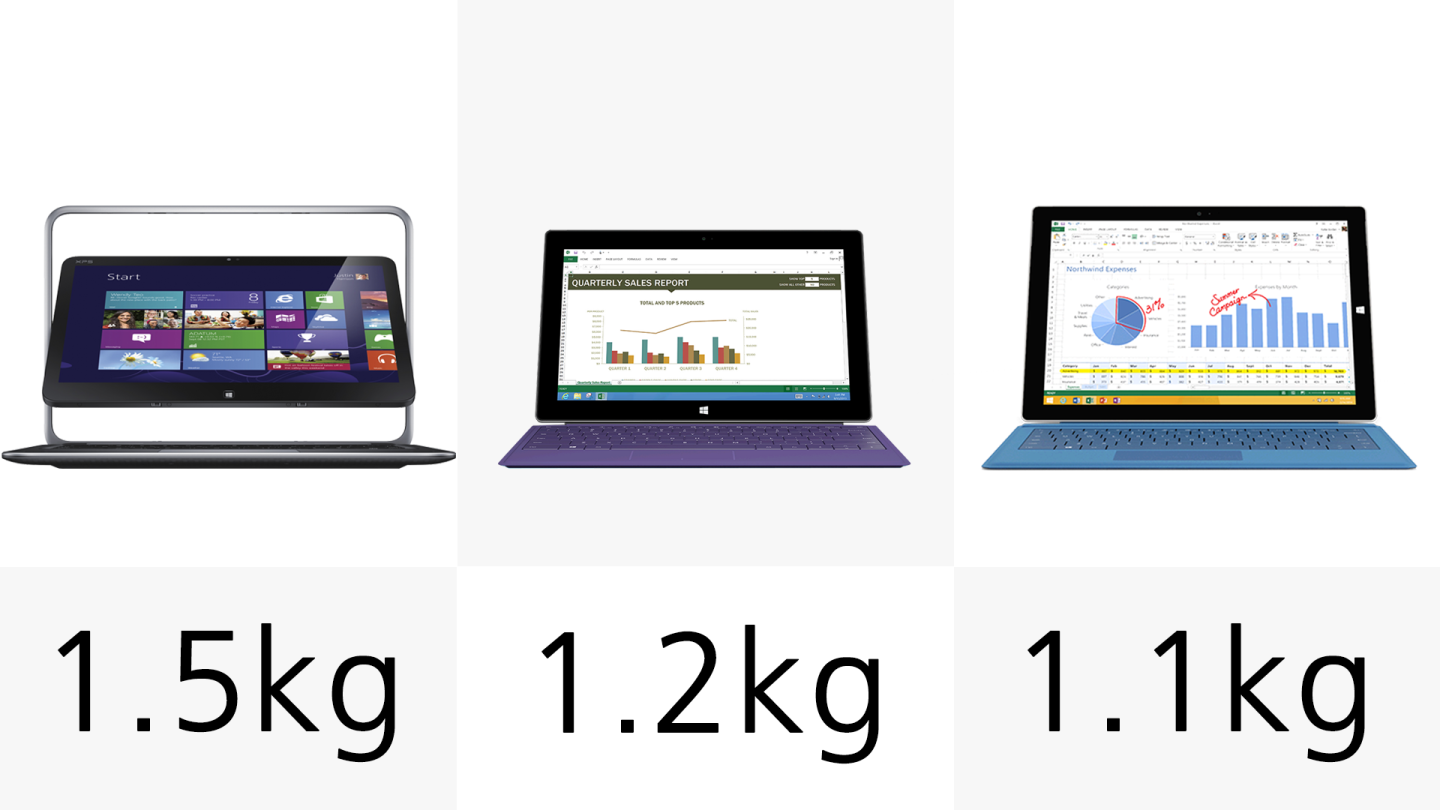
The Surface Pro 3 is the lightest device on offer, just edging out its smaller Surface Pro 2 sibling. The HP Split x2 is the heaviest system, coming in at close double the weight of Microsoft’s latest offering.
Once again, all weights include detachable keyboards/docks, where applicable.
Type

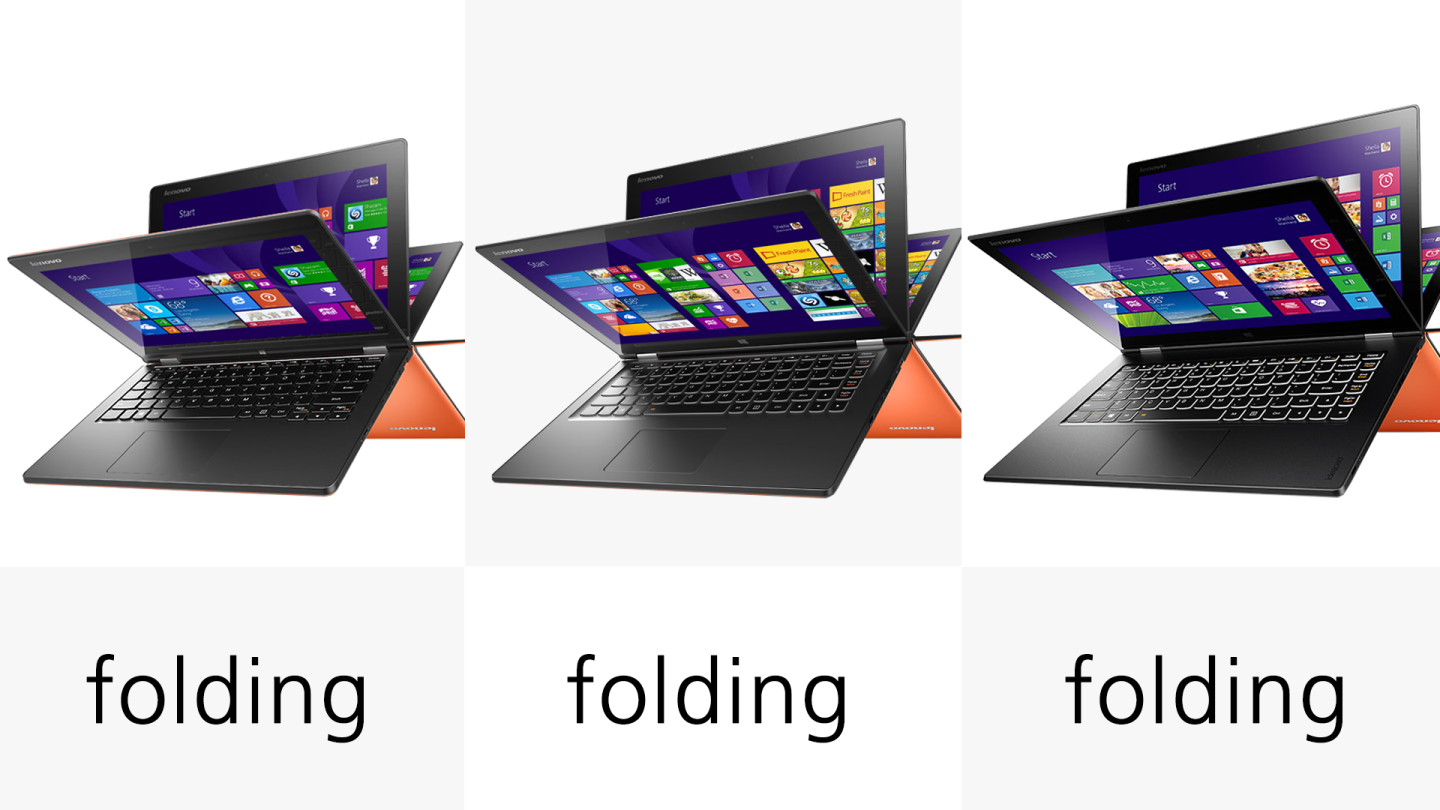
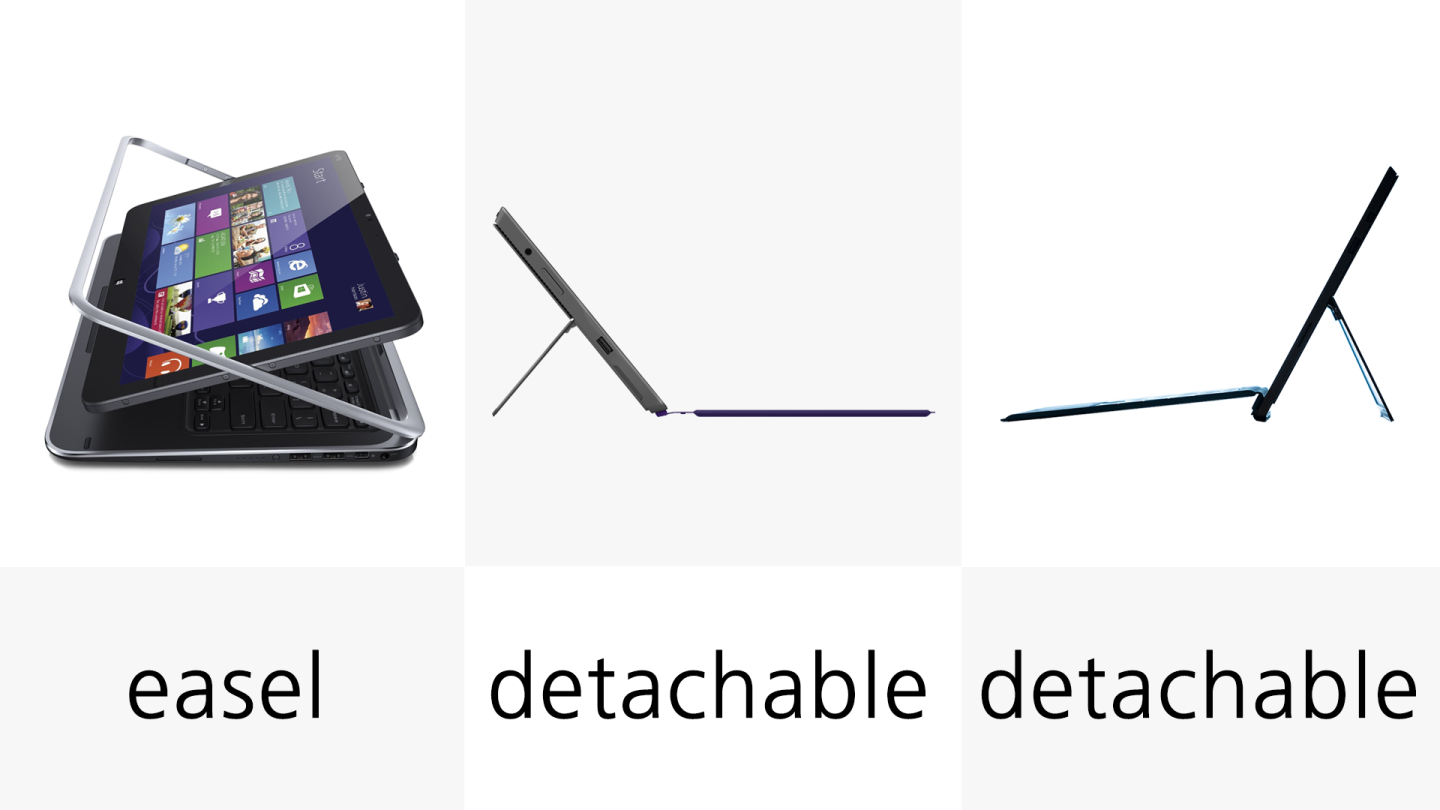
Your preference of hybrid type is likely to have a big impact on your choice of system. Broadly speaking, there are two categories on offer here. First up are detachables, that are essentially fully functional tablets that clip in to some form of dock or keyboard. The Asus Transformer Book and HP Split x2 feature a similar keyboard and trackpad setup like you’d find on a conventional notebook, while the Surface Pro 2 and 3 pack their keyboards and trackpads onto a much thinner and lighter cover.
For the Surface Pro 2, we've opted for the physical key-toting Type Cover 2 for the purposes of this comparison, as it offers a more conventional keyboard experience (the Touch Cover has touch-based, non-moving keys). Due to the thin nature of the Surfaces’ keyboard, key travel is slightly more shallow than on many full laptop keyboards. We’d recommend taking a Type Cover for a test drive before purchase.
If you’re not a fan of detachables, then a folding hybrid might be for you. These systems feature displays that (surprise, surprise) fold through 360 degrees to reach a flat tablet form factor. The Lenovo Yoga is the flag-bearer for this type of device, hence there being three different versions of the machine in our guide. The squarer profile of the Yoga 2 11-inch, 13-inch and Pro systems also makes them feel a little more natural in tablet mode than the HP Pavilion x360 (though it's worth noting that their screens have the same ratio/shape as the other devices in this bunch).
The biggest downside of the folding form factor is that you have to put up with a keyboard on the rear of the device while in tablet mode. This is where the Dell XPS 12 steps up to the plate, offering a unique “easel” mechanism that flips the display from a central hinge, allowing the keyboard to remain hidden beneath the display.
Build



Most of these 2-in-1s feature a plastic construction, though the rubberized feel of the Lenovo systems make them feel more premium than the HP or Asus hybrids. The construction of the XPS 12 is also solid and premium feeling, while the Surface Pro 2 and 3 win out with their high-end magnesium builds.
Colors
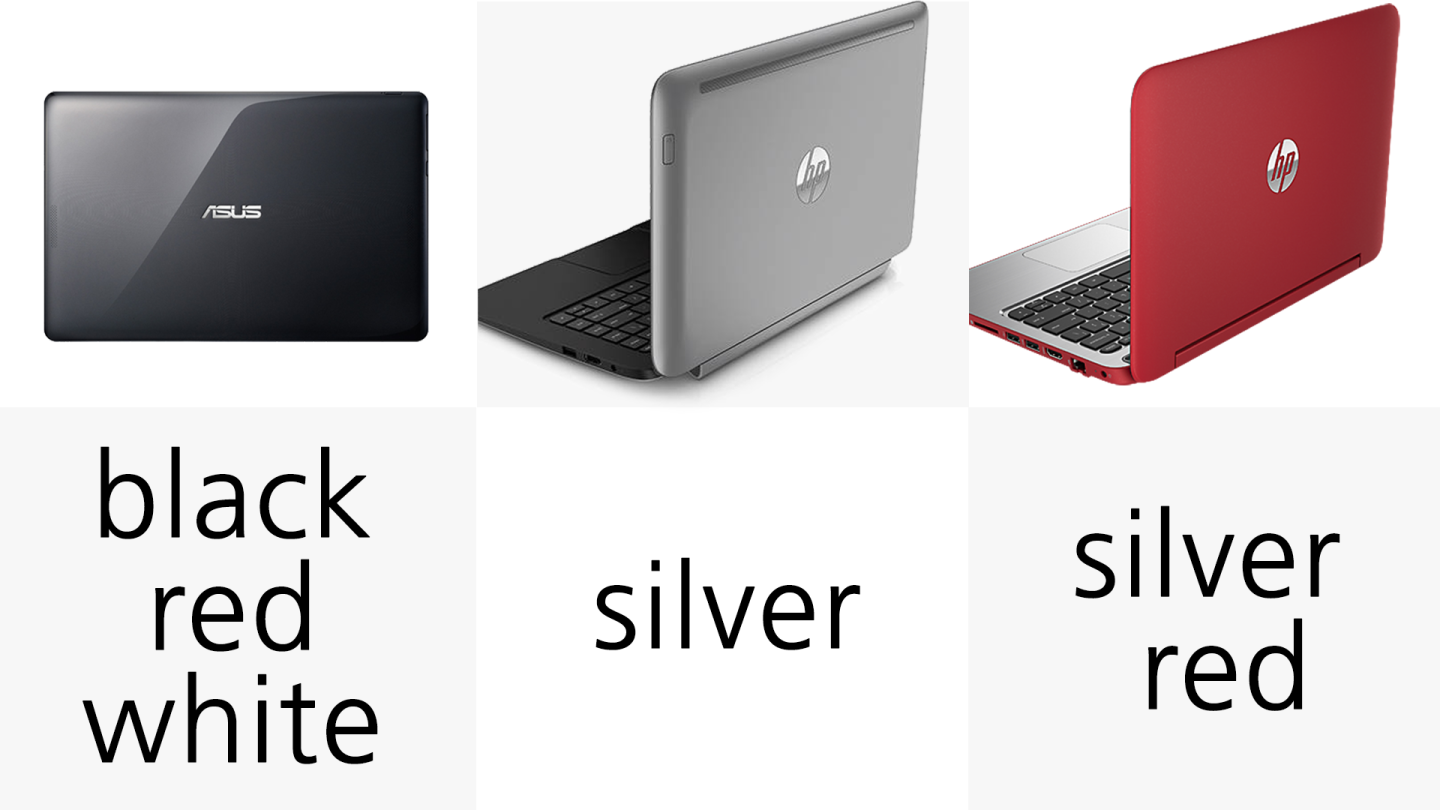
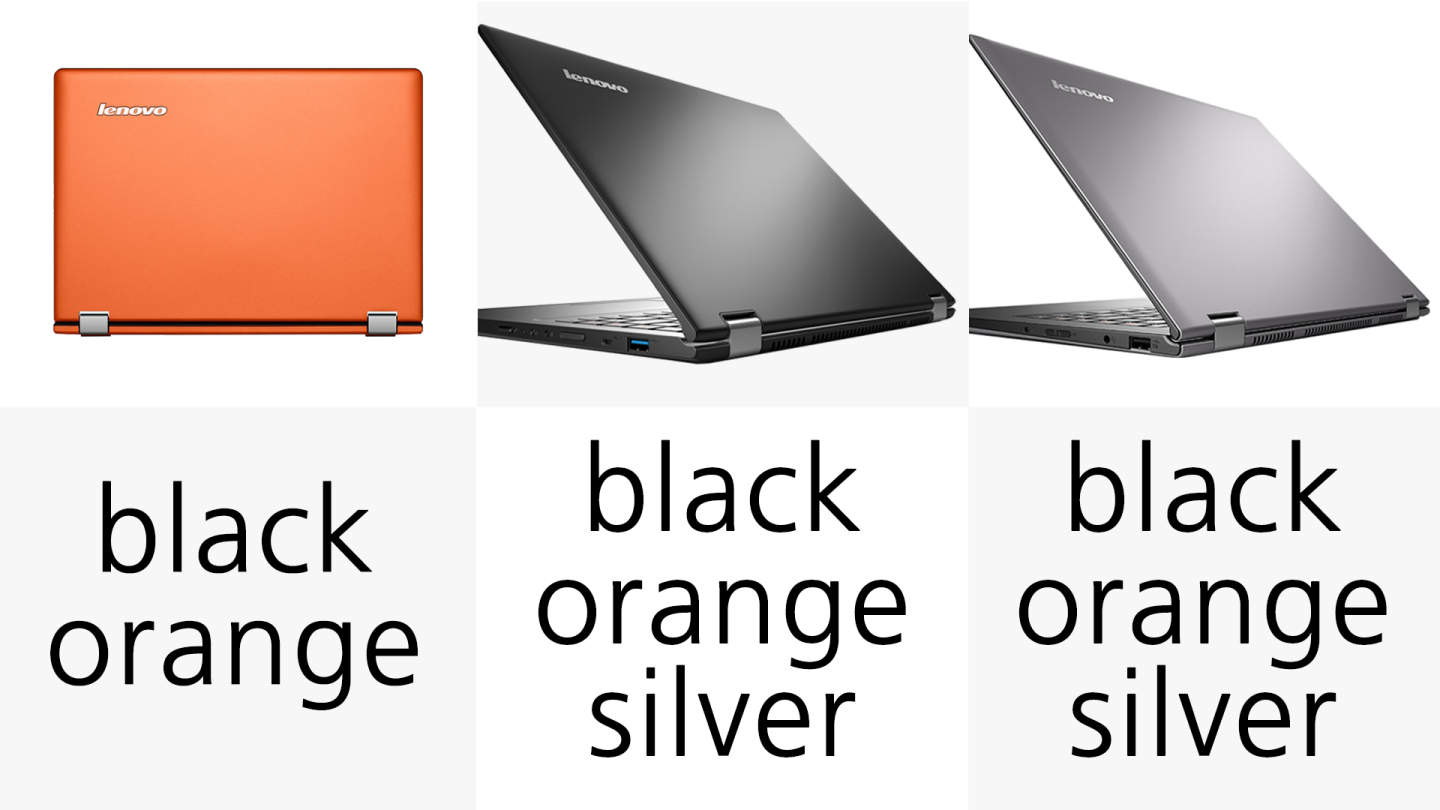
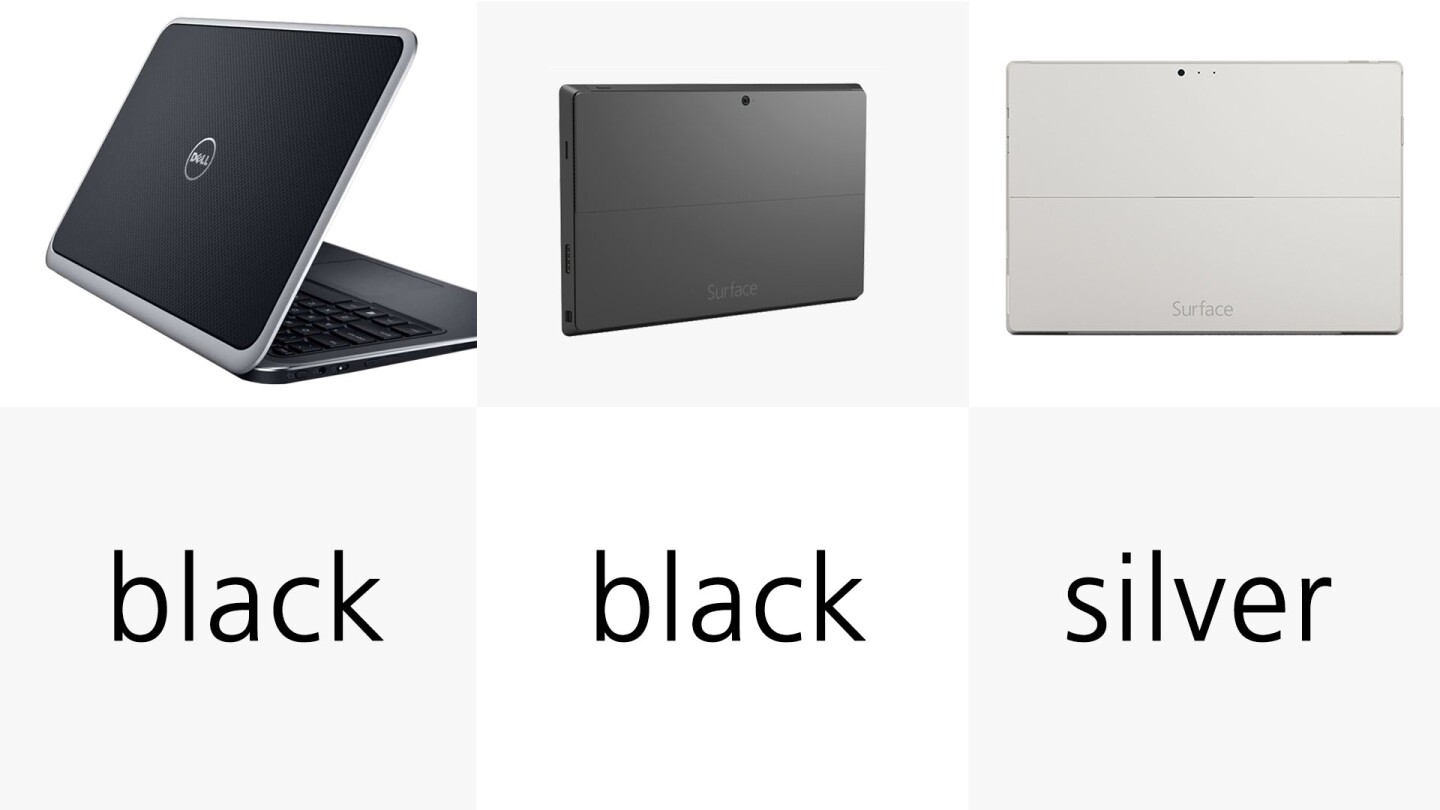
The Asus Transformer Book is perhaps the most colorful device here, while all three variations of the Lenovo Yoga 2 are available in the device’s trademark Clementine Orange finish.
Display (size)
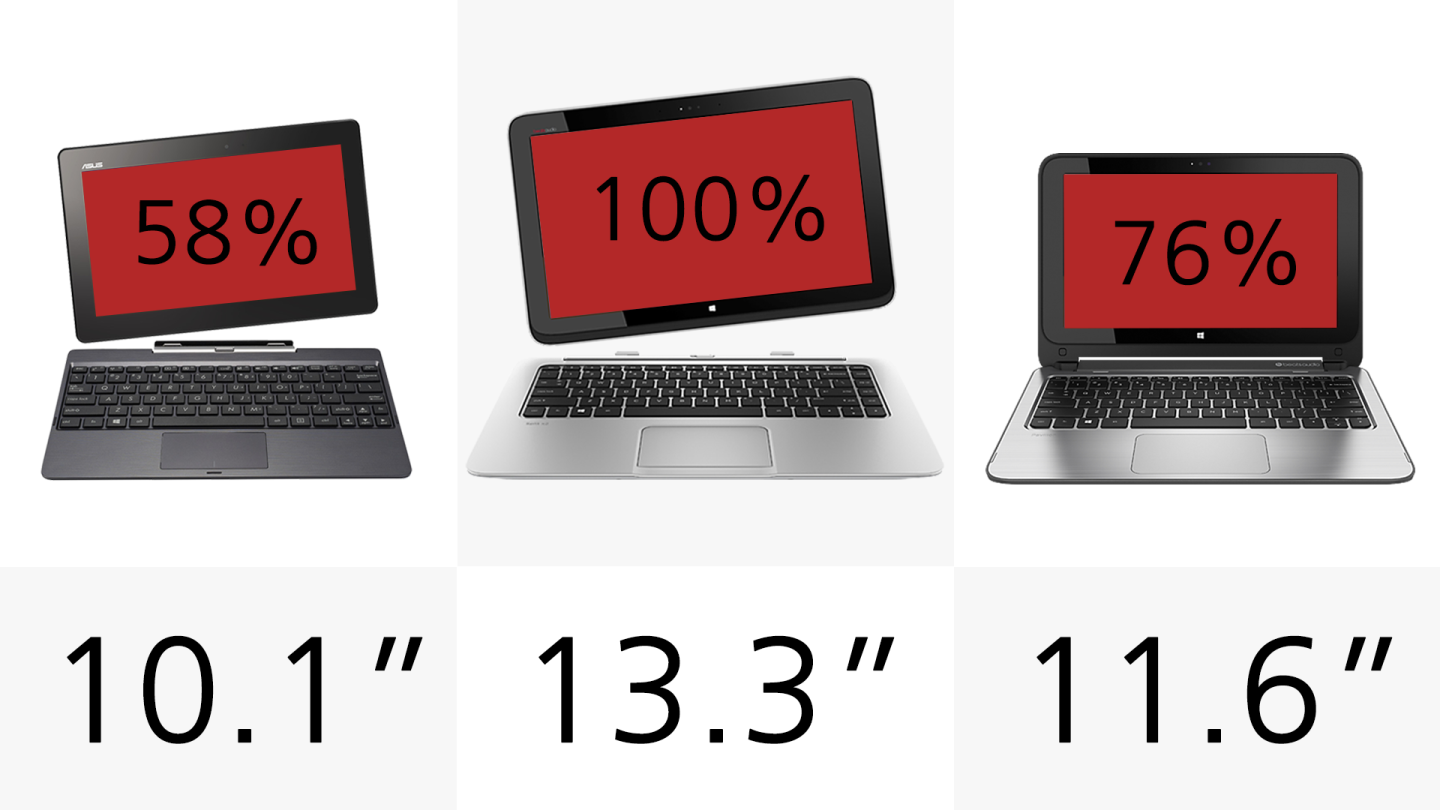
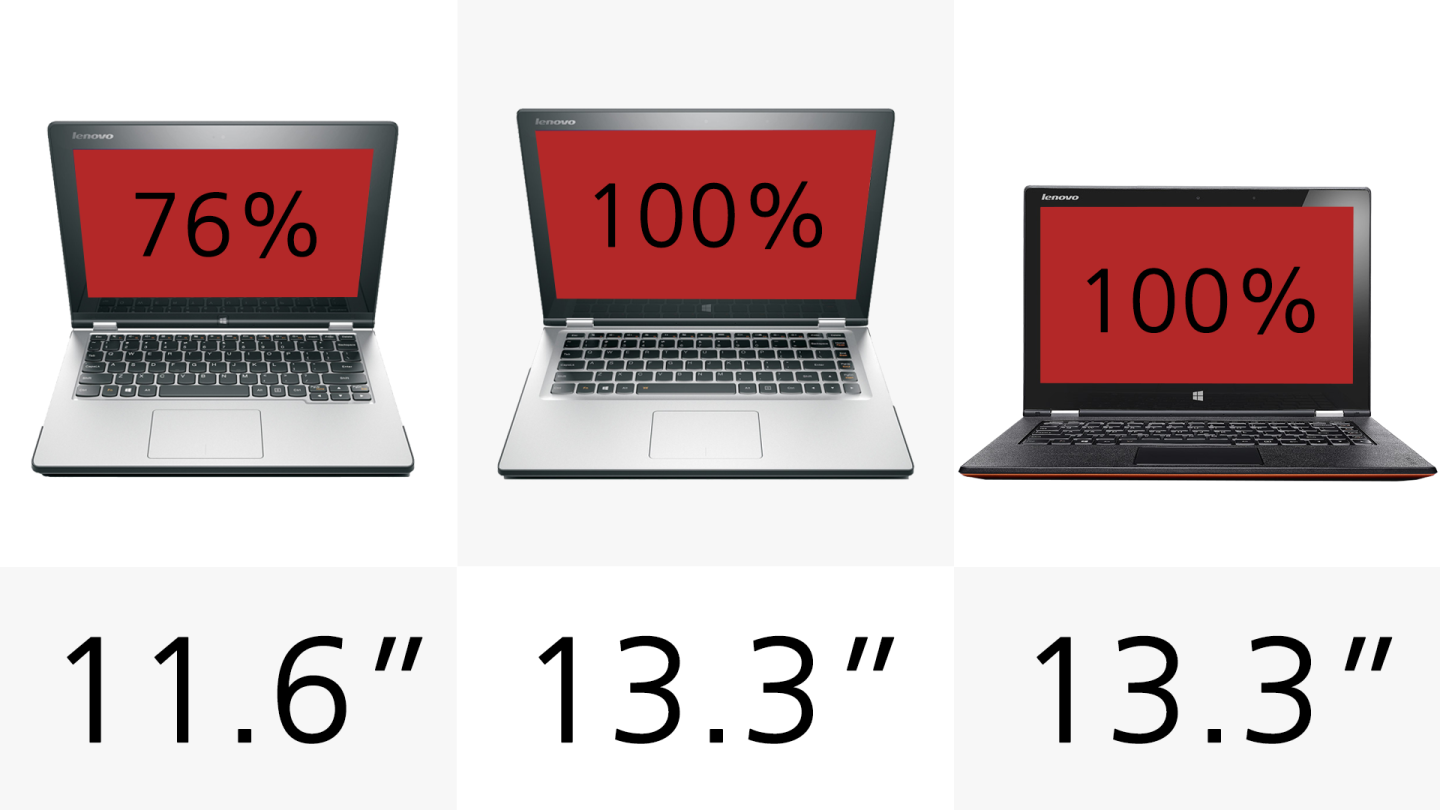
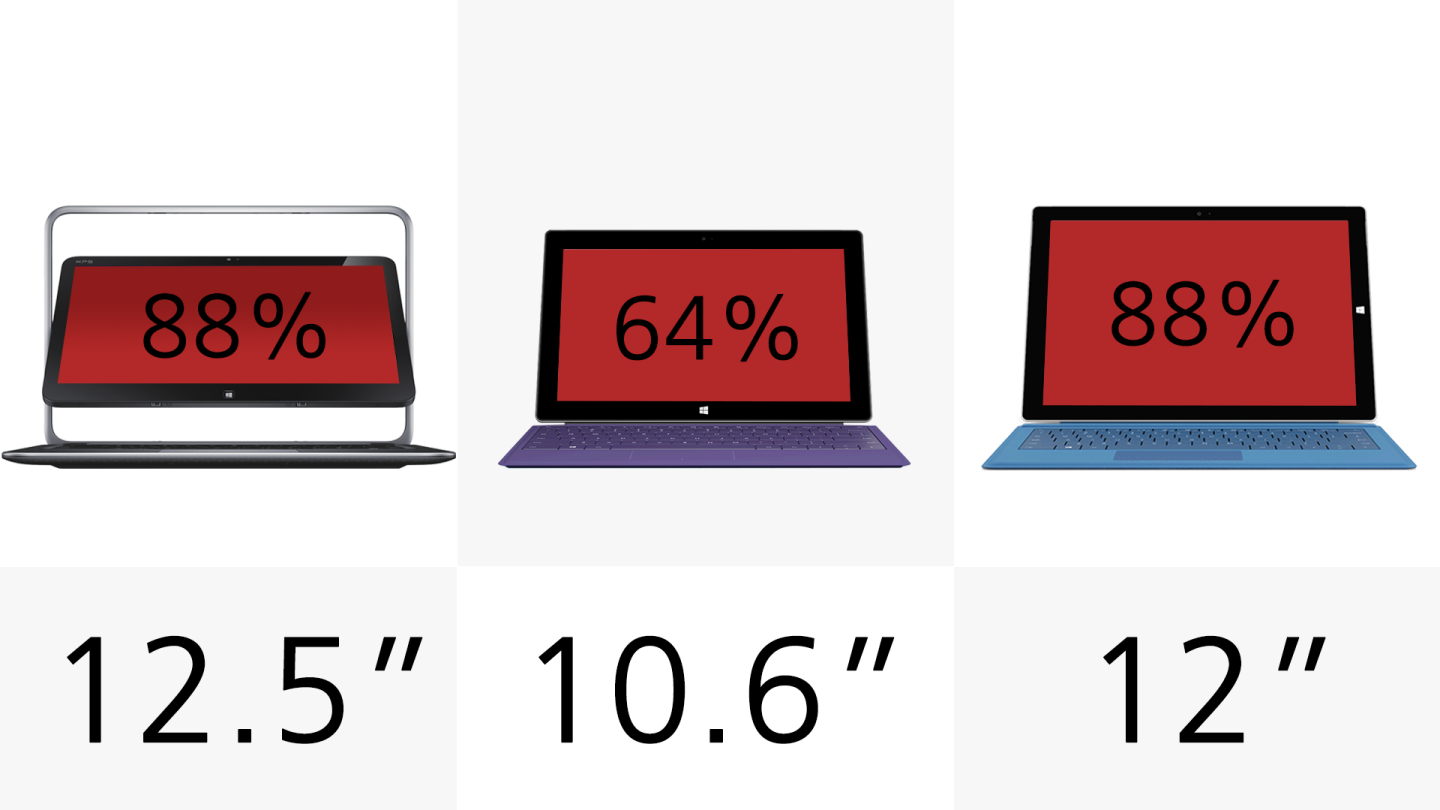
The percentages above show each device's relative screen area, compared to the largest in the group (the three 13.3-inchers).
As you'll see, there is some significant variation when it comes to display size. The 13.3-inch Lenovo Yoga 2 13 and Pro, as well as the HP Split x2, offer a full 73 percent more screen space than the 10.1-inch Asus Transformer Book T100. The display on the Surface Pro 3 features a 3:2 aspect ratio, giving it the same display area as the Dell XPS 12.
Display (resolution)
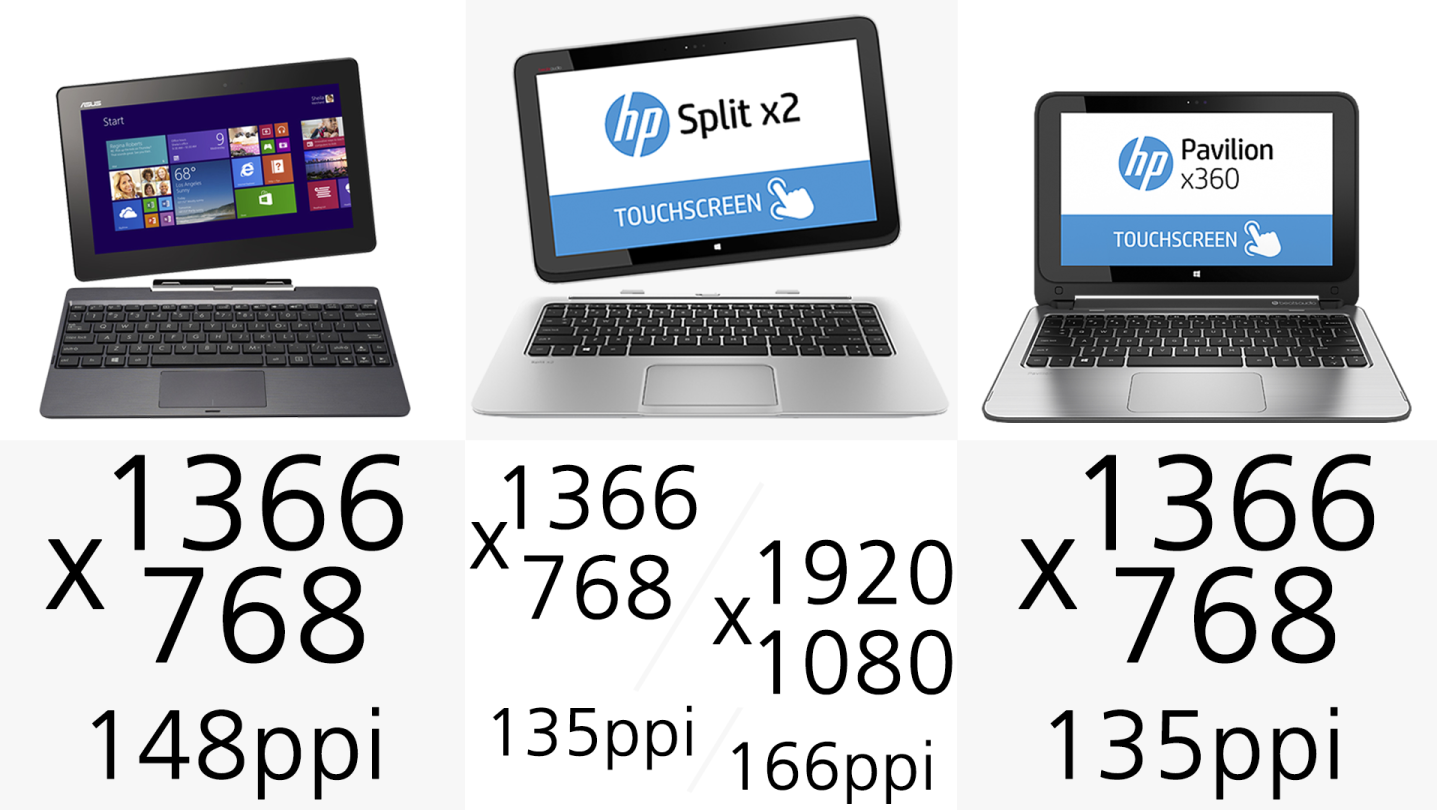
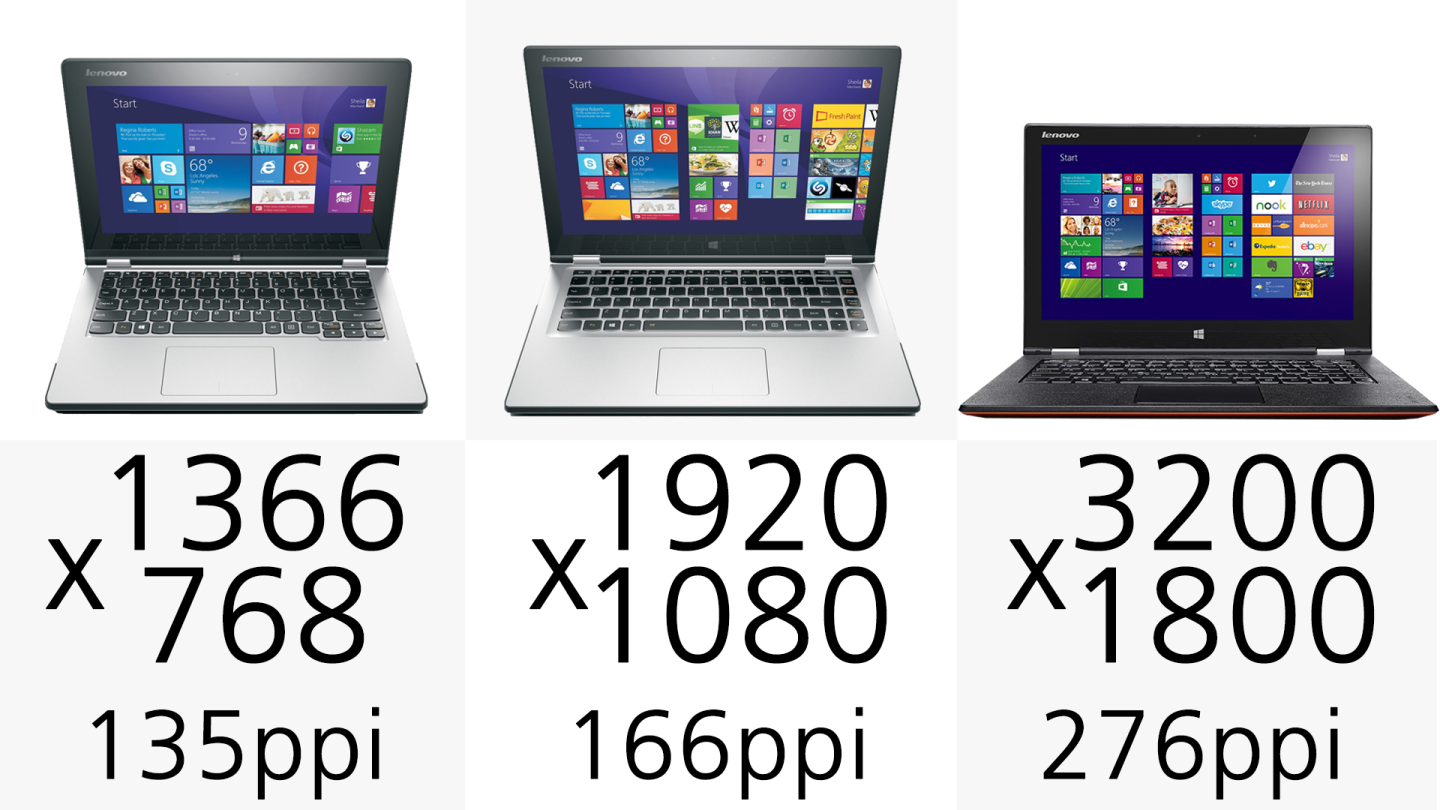

Screen resolution is every bit as varied as size, with the Lenovo Yoga 2 Pro proving to be the best of the bunch when it comes to sheer pixel count. The device’s 3,200 x 1,800 display actually gives it 104 percent more pixels per inch than the HP Pavilion x360, Lenovo Yoga 2 11-inch or the lower specced version of the HP Split x2.
If you’re looking for a pixel-dense display then the Surface Pro 3 is your next best option, offering just 22 percent fewer pixels than the Yoga 2 Pro.
Processor

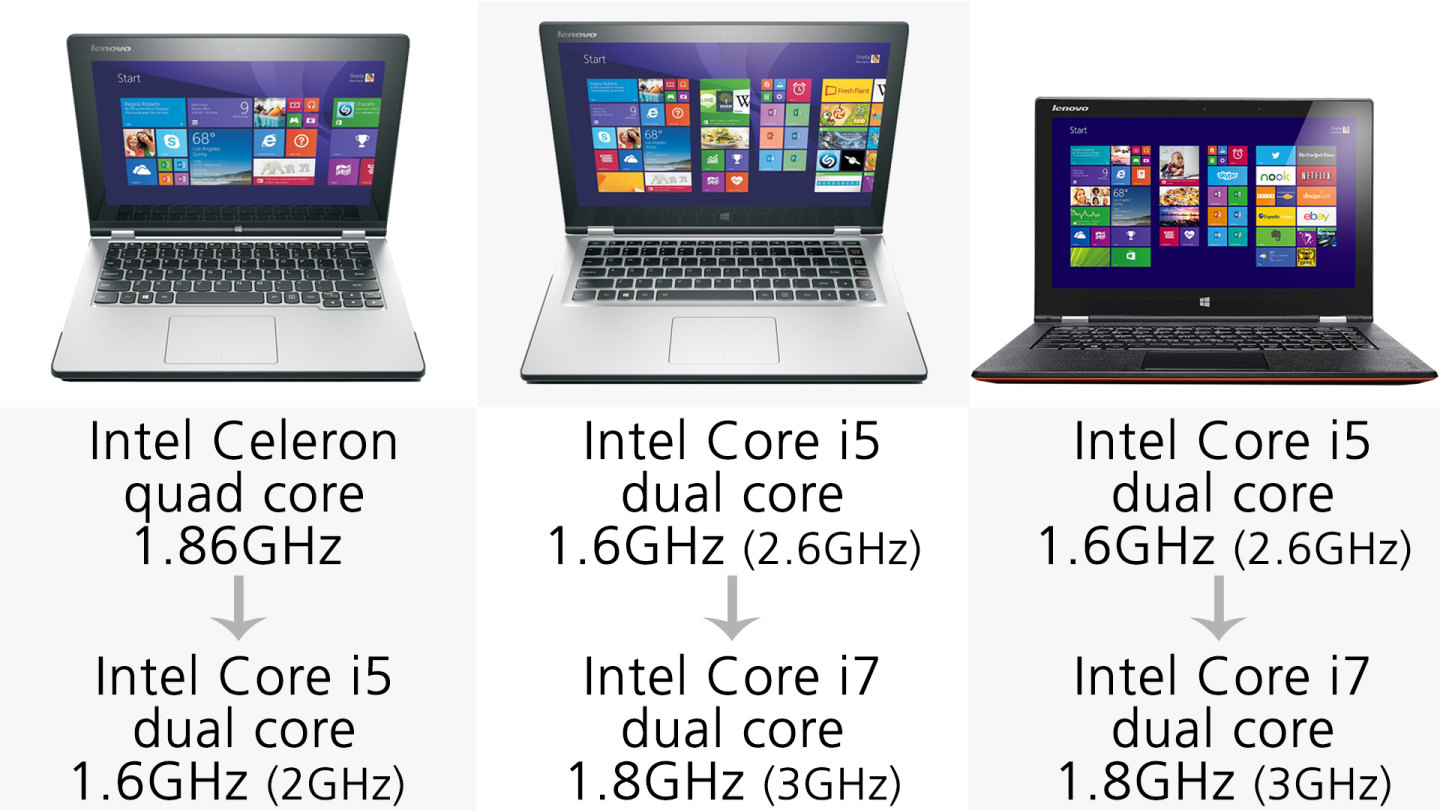
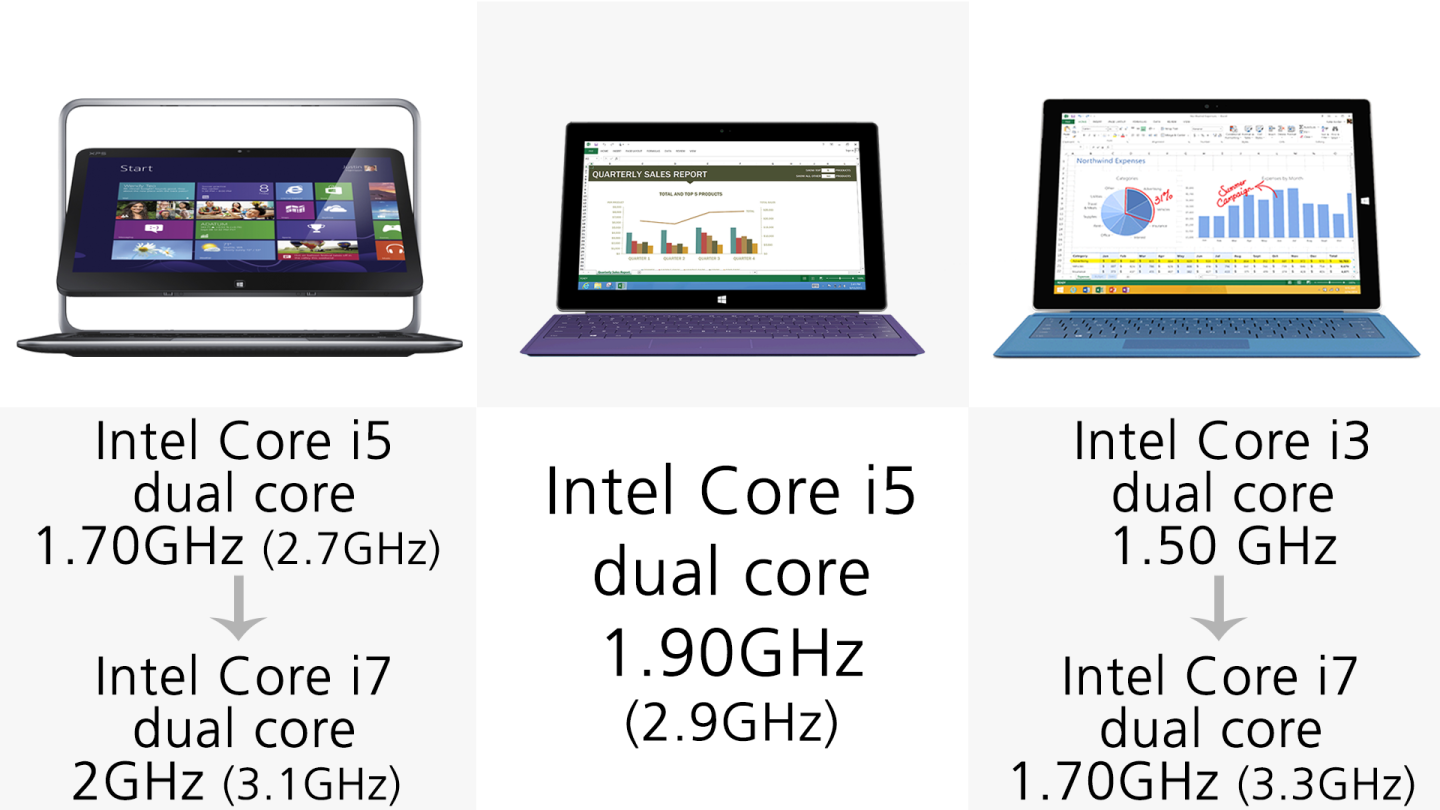
This is perhaps the most complex category in our comparison, but fear not, it’s not all as complicated as it seems. The reality here is that the majority of the systems we have under the microscope are actually available in several CPU flavors, making a direct comparison difficult.
However, it is easy to pick out both the weakest and most powerful choices. The Yoga 2 13-inch, Yoga 2 Pro, XPS 12 and Surface Pro 3 can all be configured with high-end Intel Core i7 chips, making them the best choices when it comes to raw performance. Don’t be fooled by the dual core nature of these CPUs – they’re going to be more than capable for the majority of general computing tasks.
The Intel Atom and Pentium chips found in the Asus Tranformer Book and HP Pavilion x360 are the weakest choices here, and are best avoided if your wallet can handle an upgrade to a Core i5 or even i3-packing system.
RAM
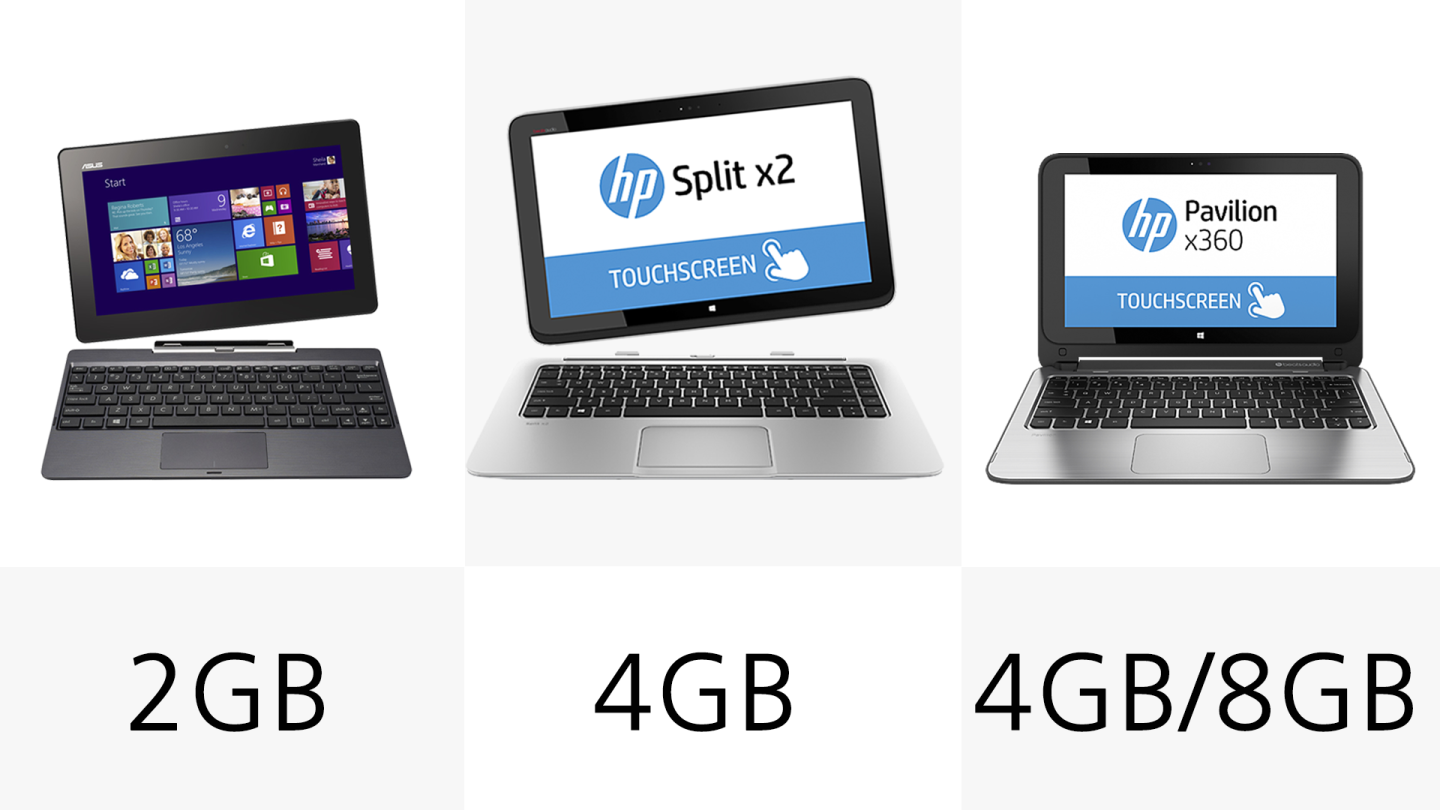
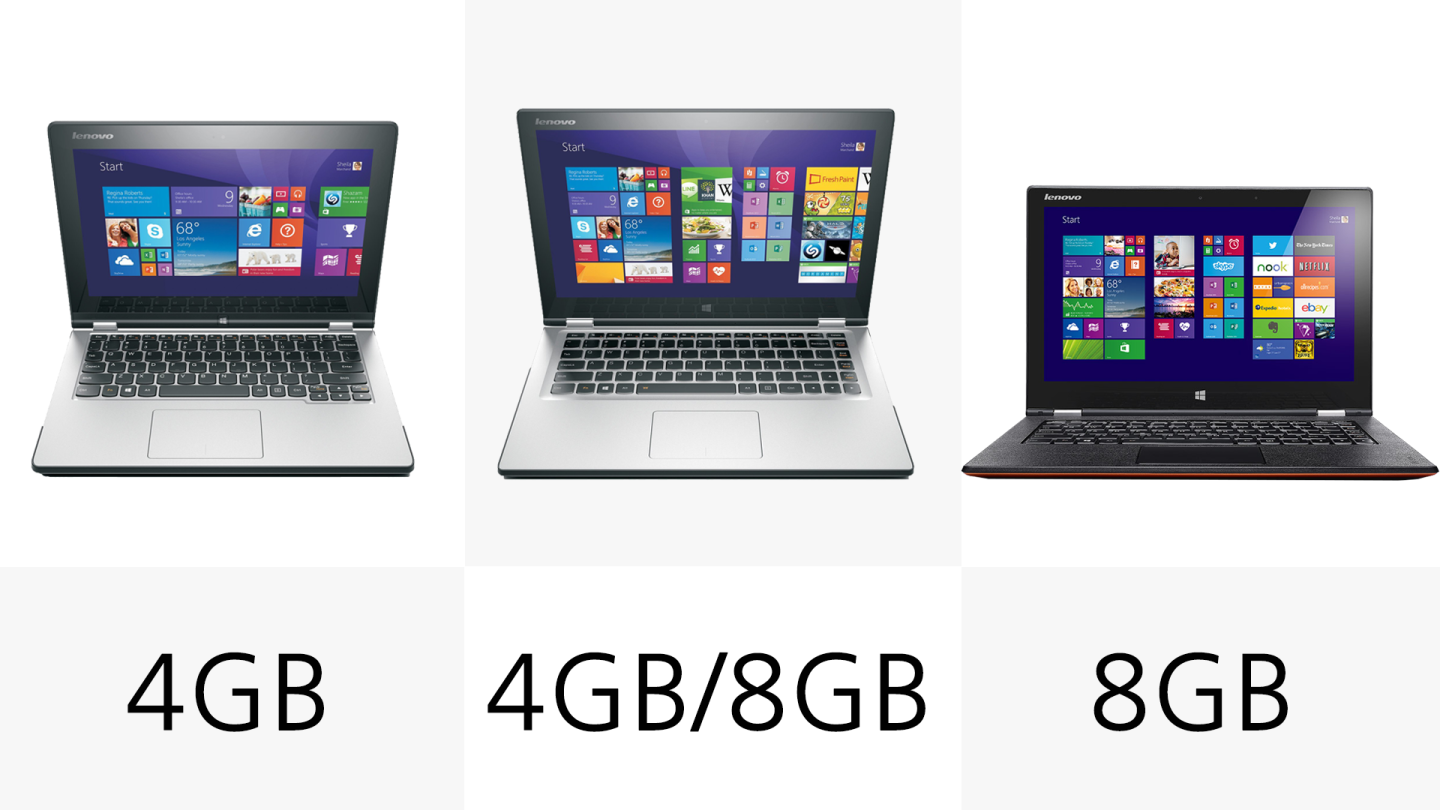

With the exception of the 2 GB Asus Tranformer Book, most of the hybrids pack either 4 or 8 GB of memory. In the case of the Surface Pro 2 and 3, RAM configuration is tied to your choice of storage and/or processor, with the more expansive 8 GB offering only available when you select high-end components elsewhere.
Storage
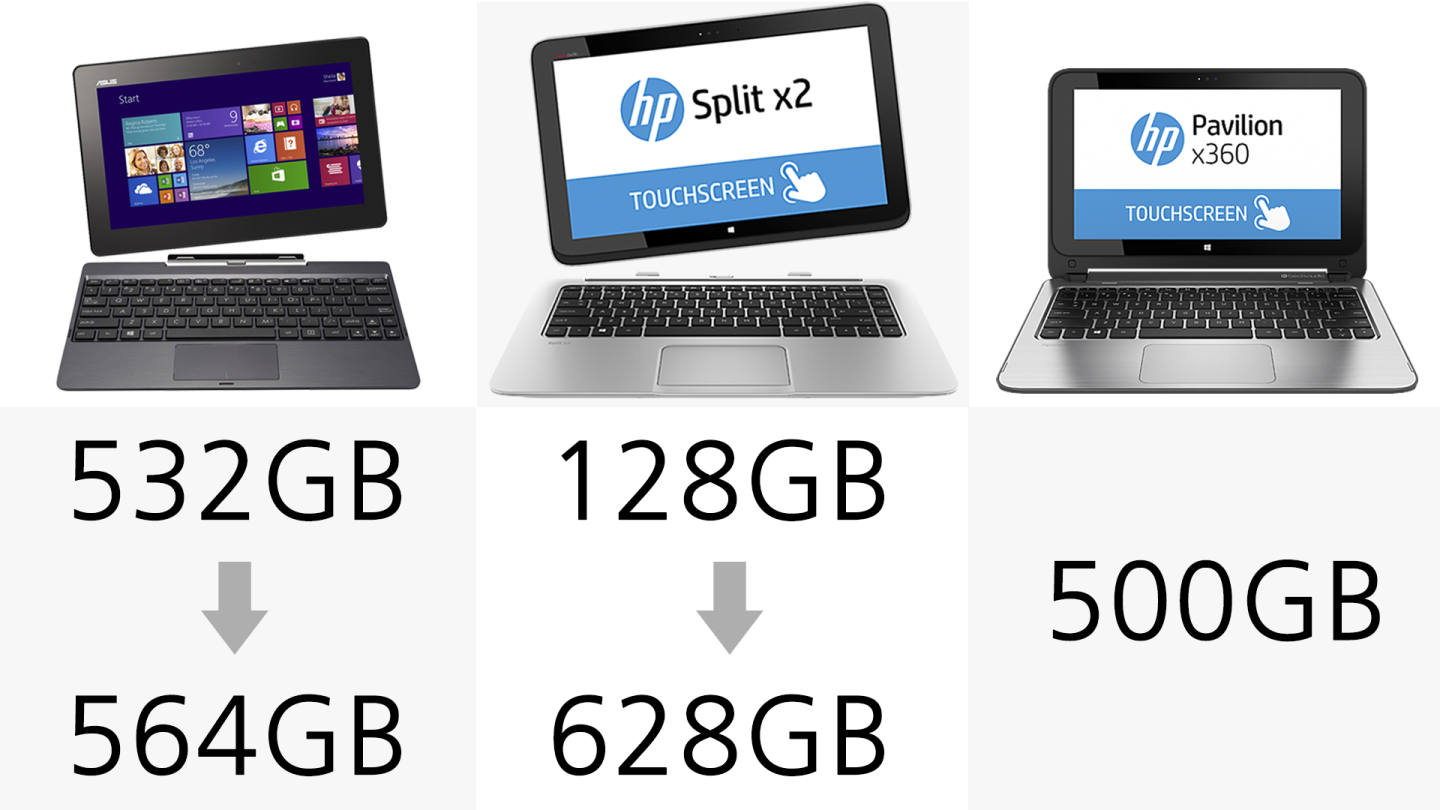
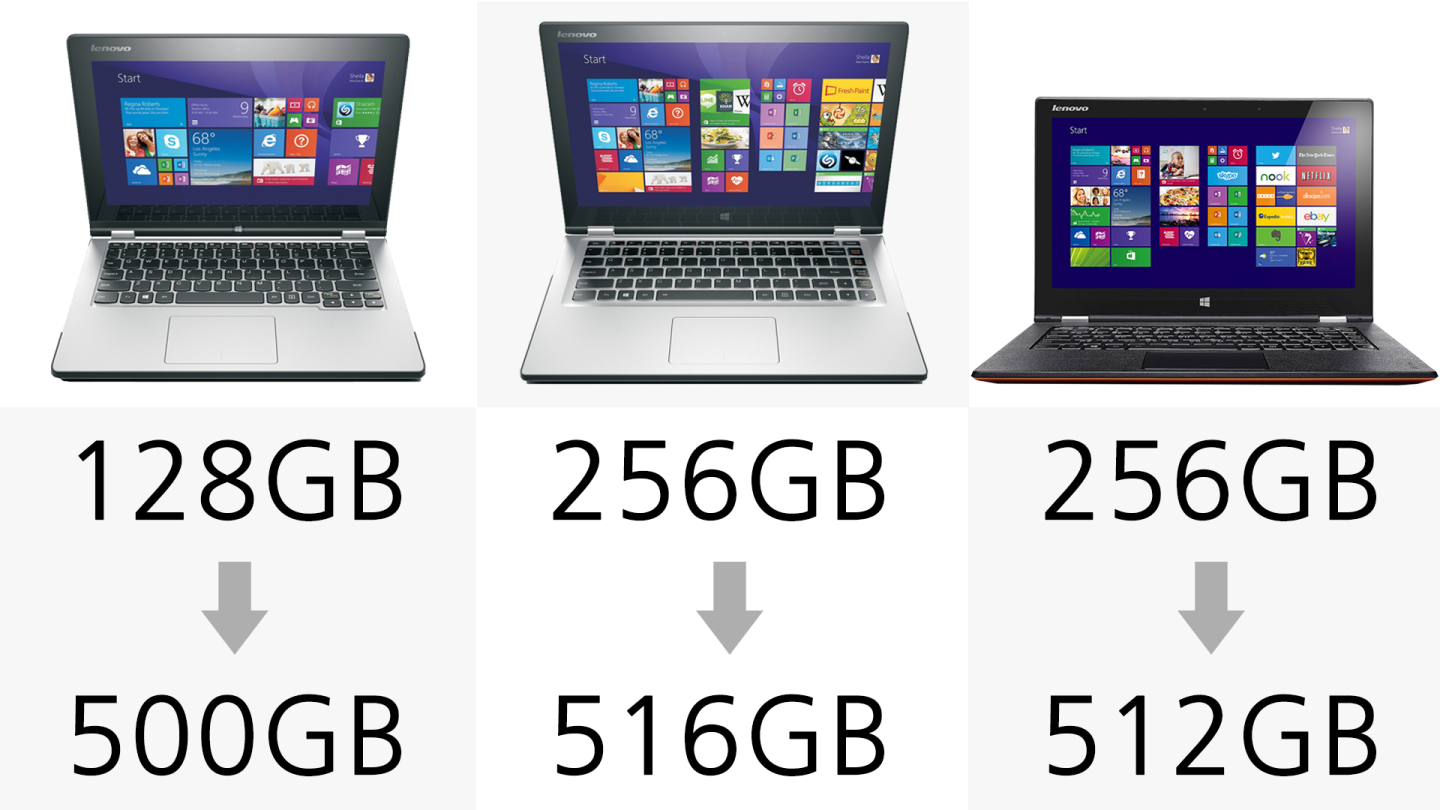
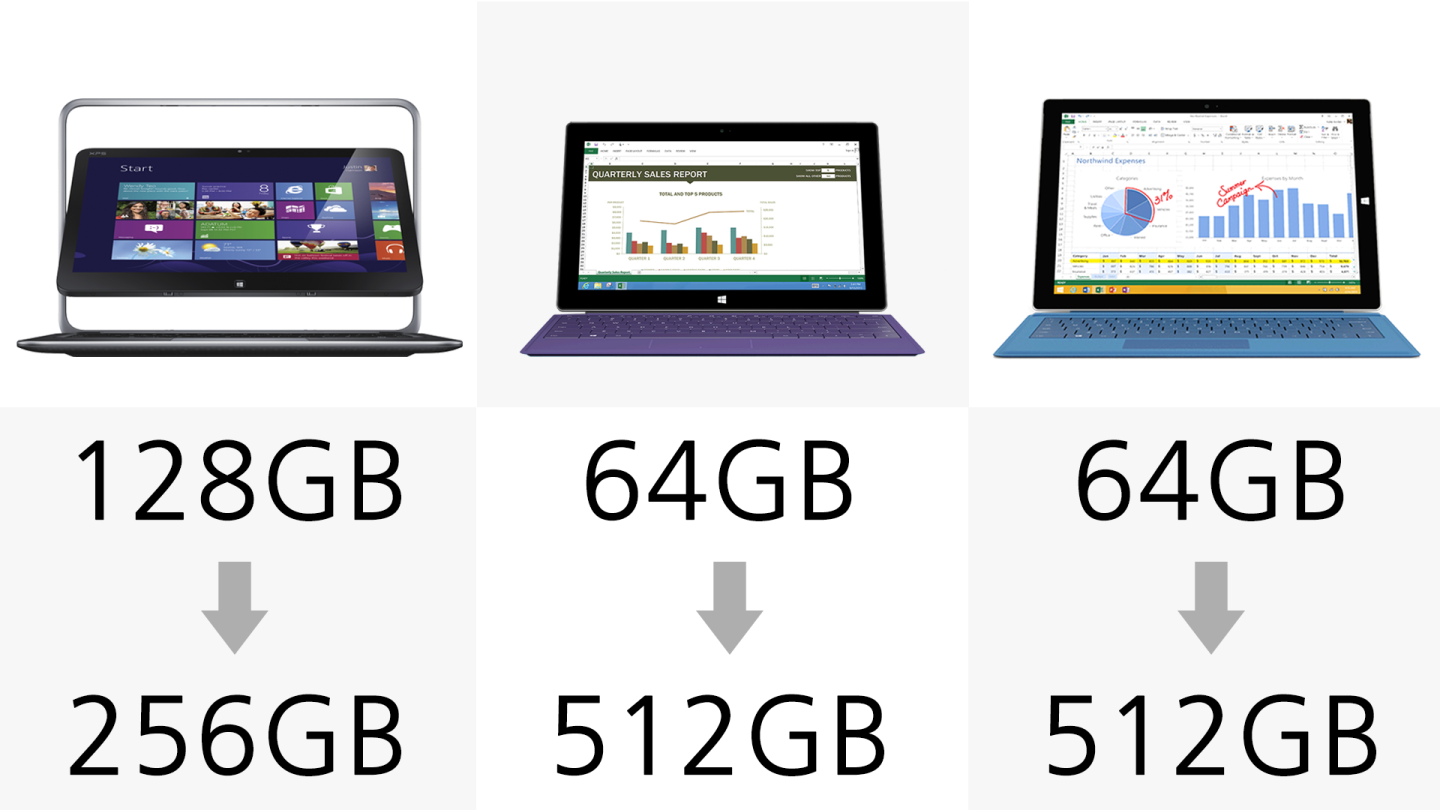
As with CPU selection, there’s a fair bit of variation when it comes to storage capacity. The numbers here show the minimum and maximum options for each device. As always, you'll have to pony up more to upgrade your storage on any given PC.
For the lower capacity options (most notably 32 and 64 GB configurations), it's worth noting that Windows 8.1 takes up a fair bit of hard drive space, meaning your actual usable space will be lower than that listed.
Storage type
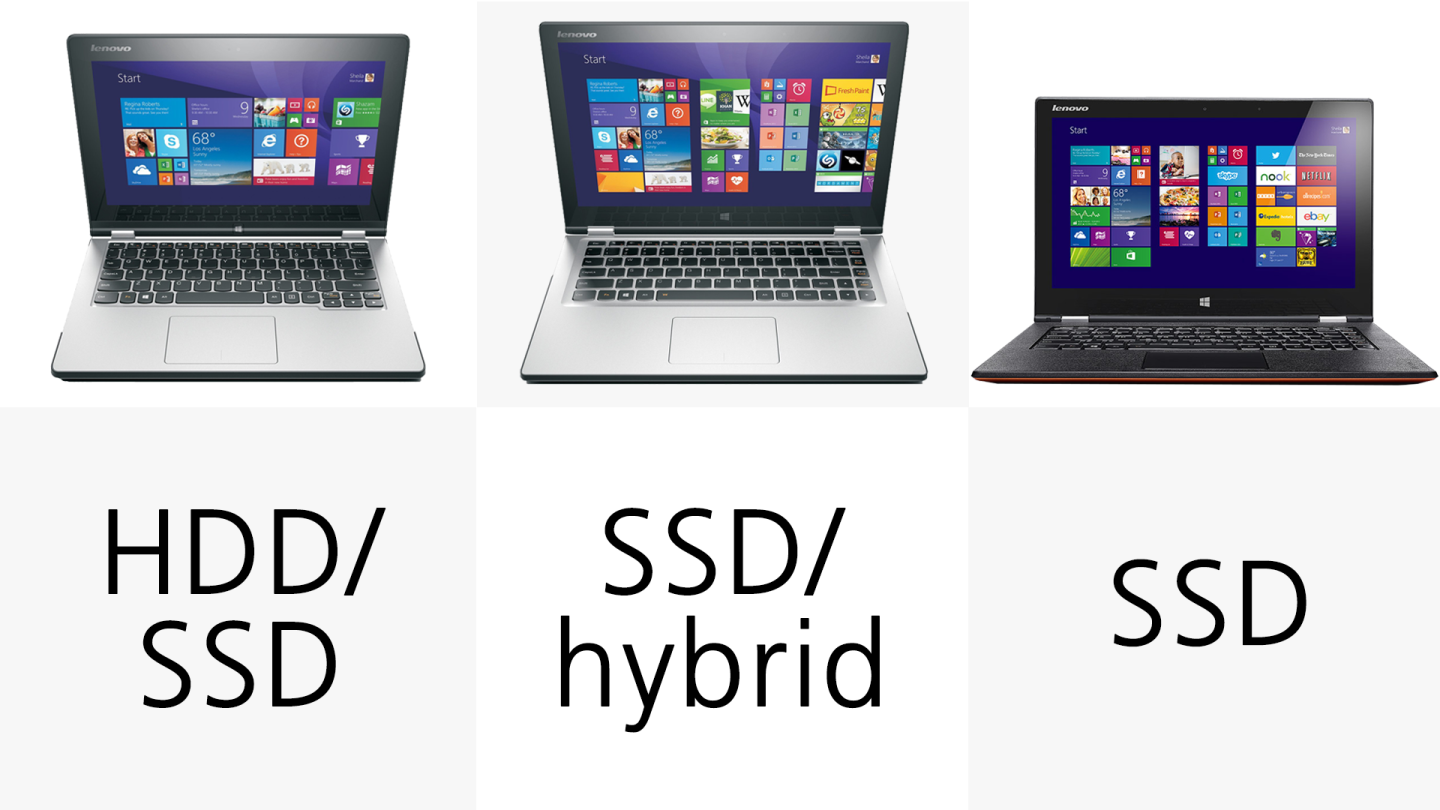

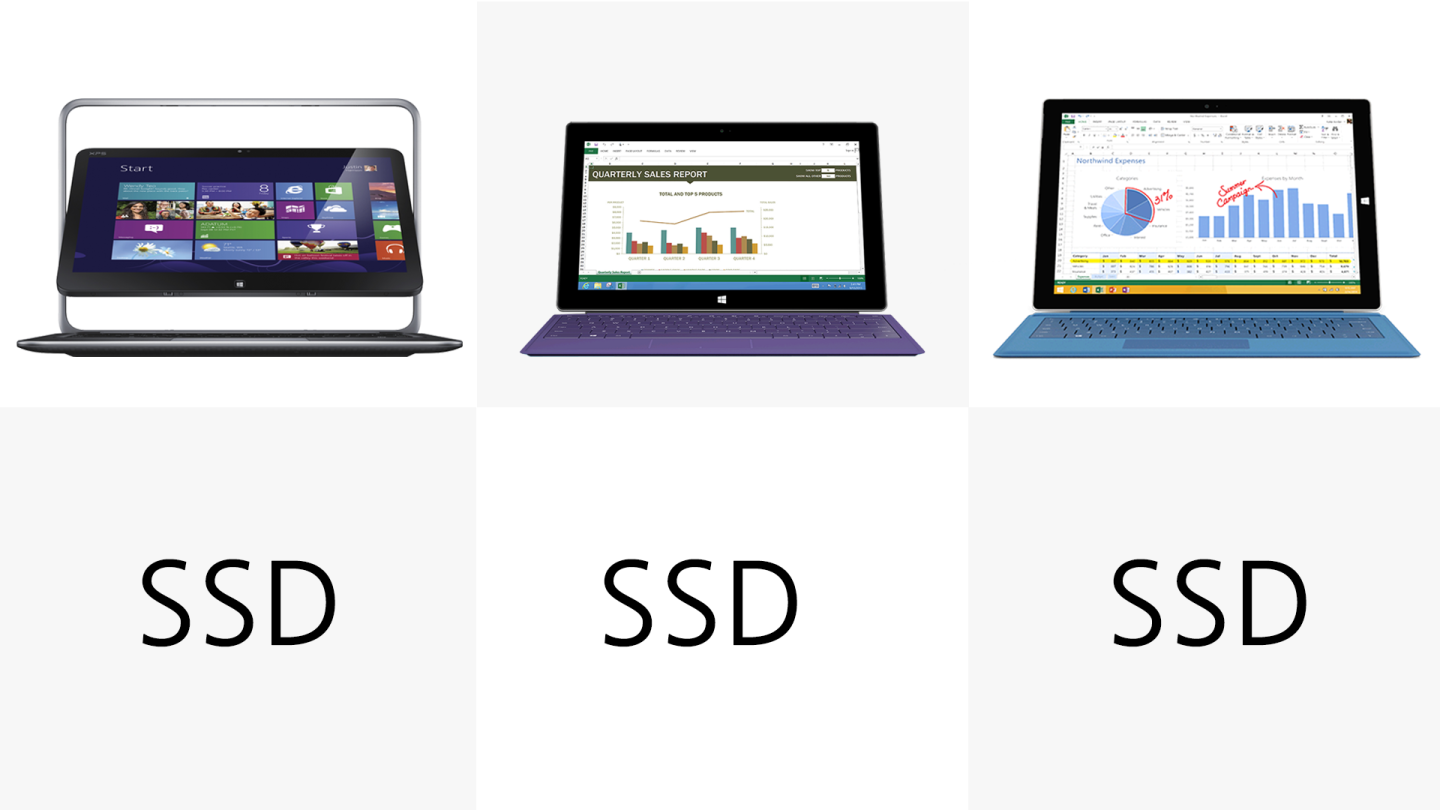
While quite a few of the devices here can be configured with fairly spacious hard drives, not all forms of storage are created equally. Solid-state drives (SSDs) are the fastest type of storage here, while hybrid drives (a combination of an SSD and a more conventional spinning hard drive) offer a compelling balance of cost, speed and capacity.
The 512 GB SSDs available in the Yoga 2 Pro and Surface Pro 3 are the best choices when it comes to performance, but they’ll also significantly boost the asking price.
USB Ports
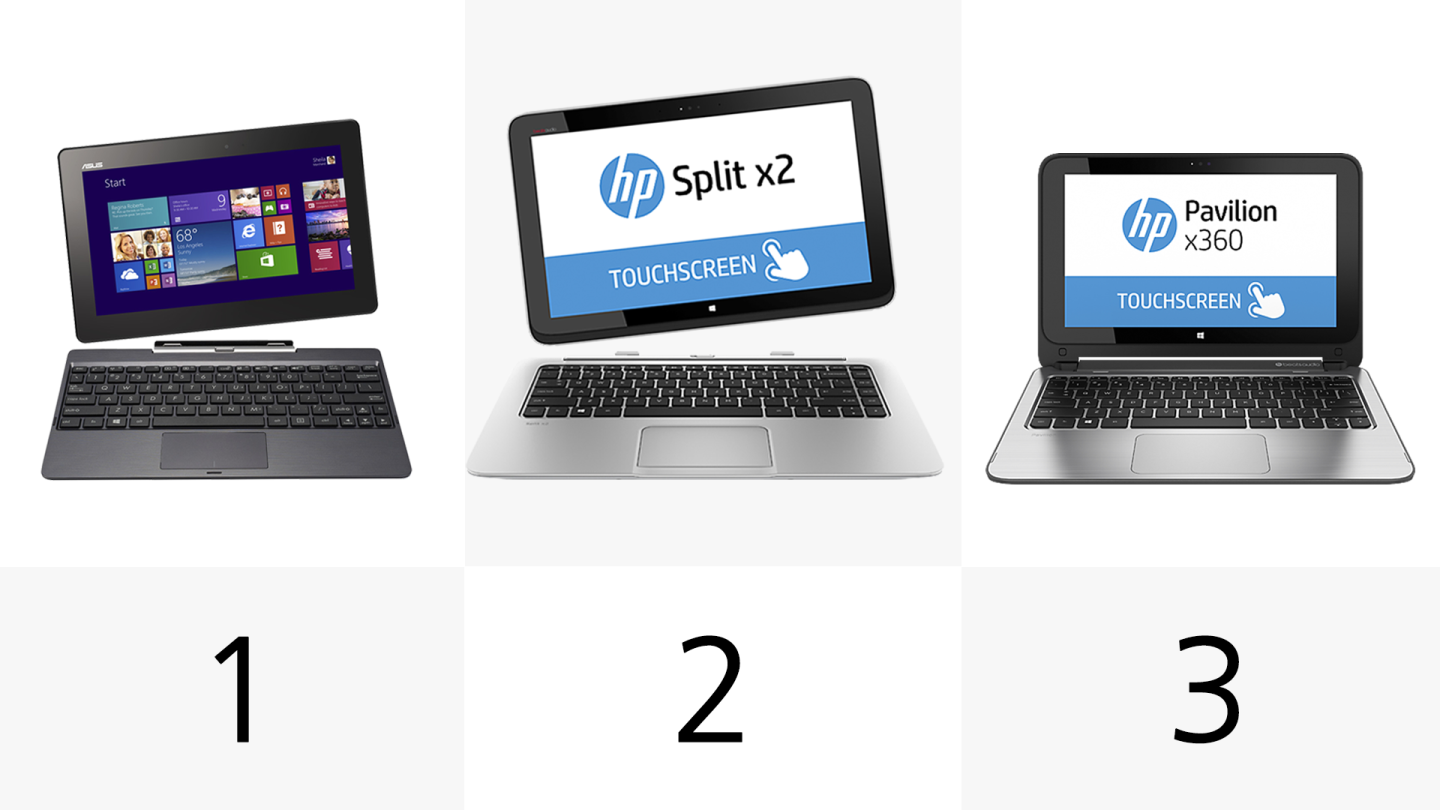

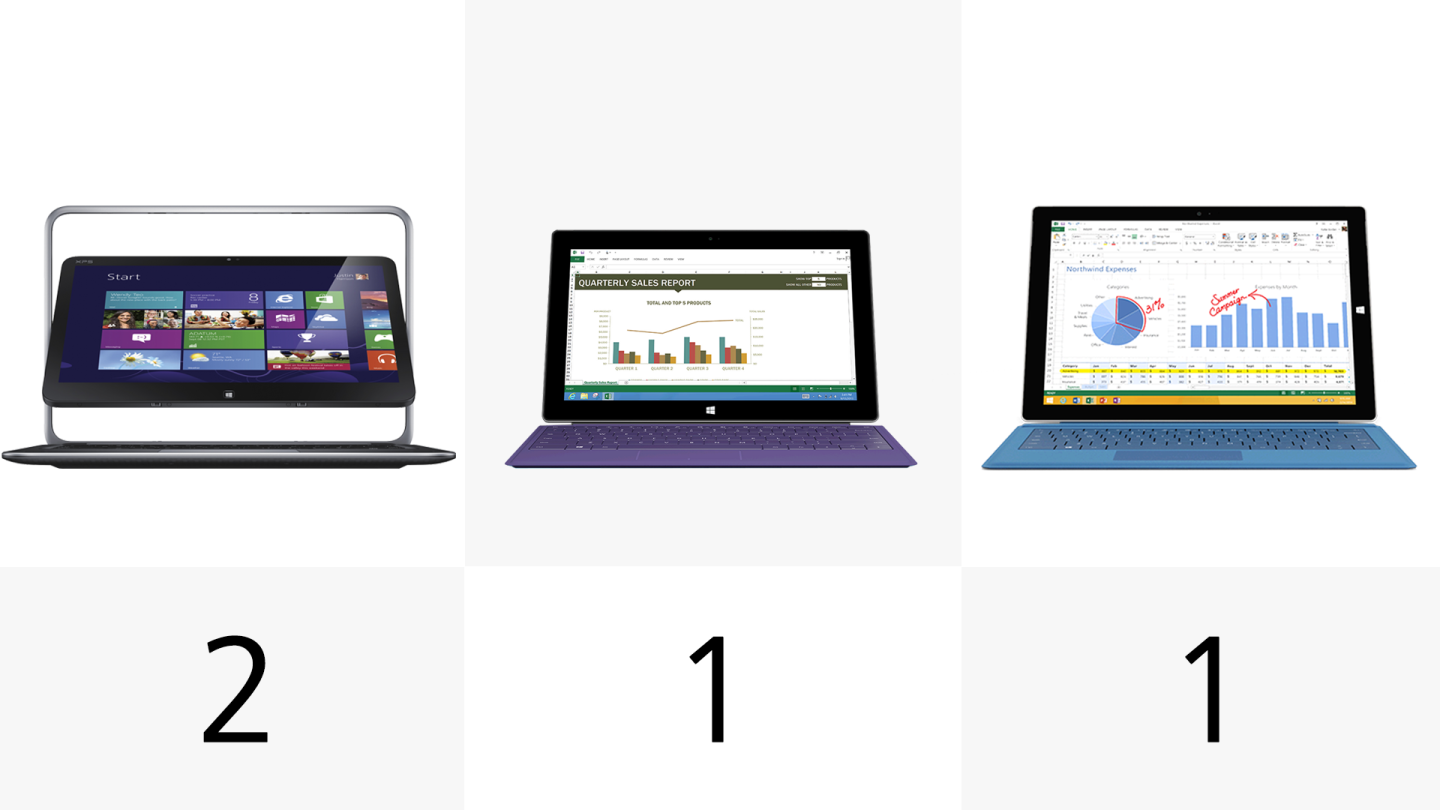
All systems offer at least a single USB port.
USB 3.0

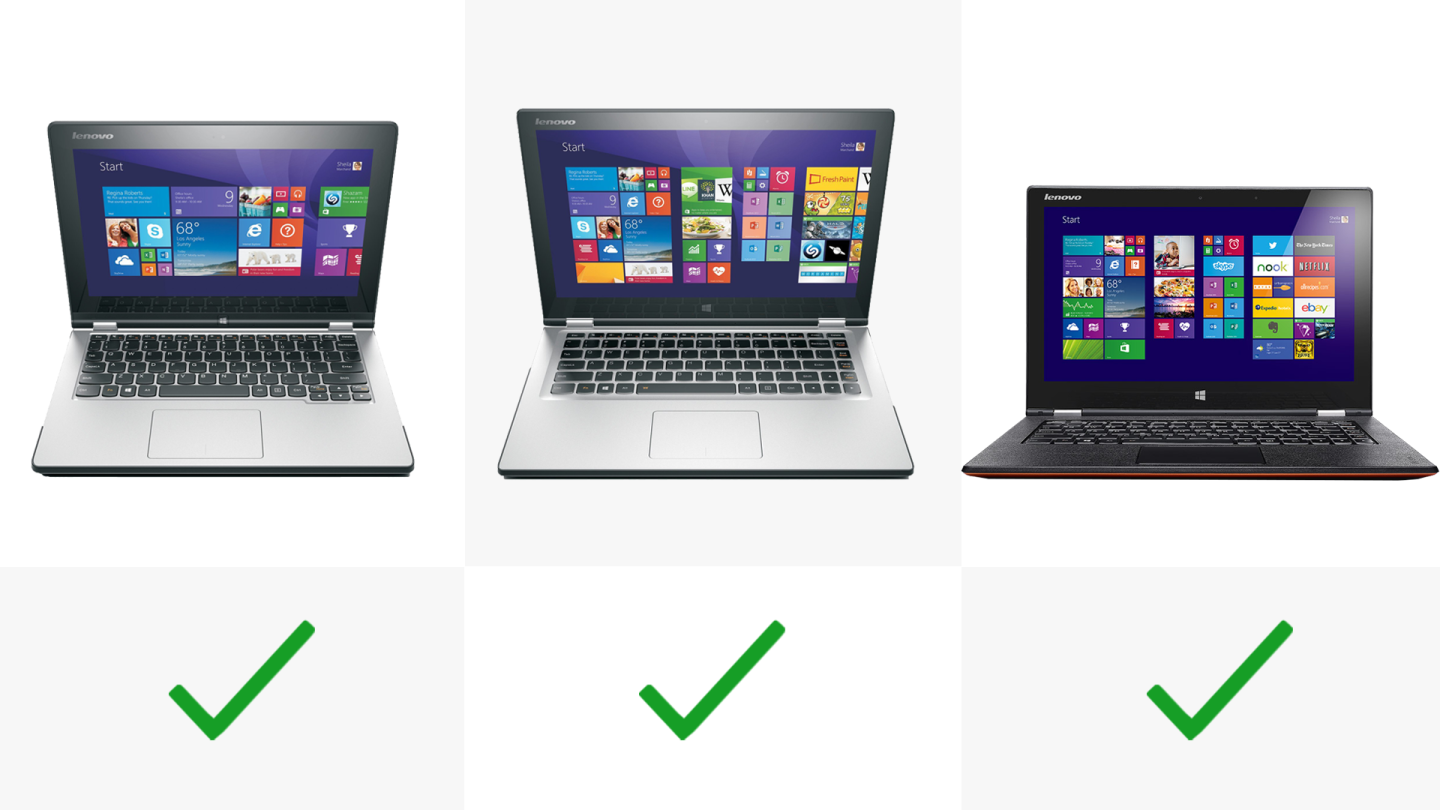
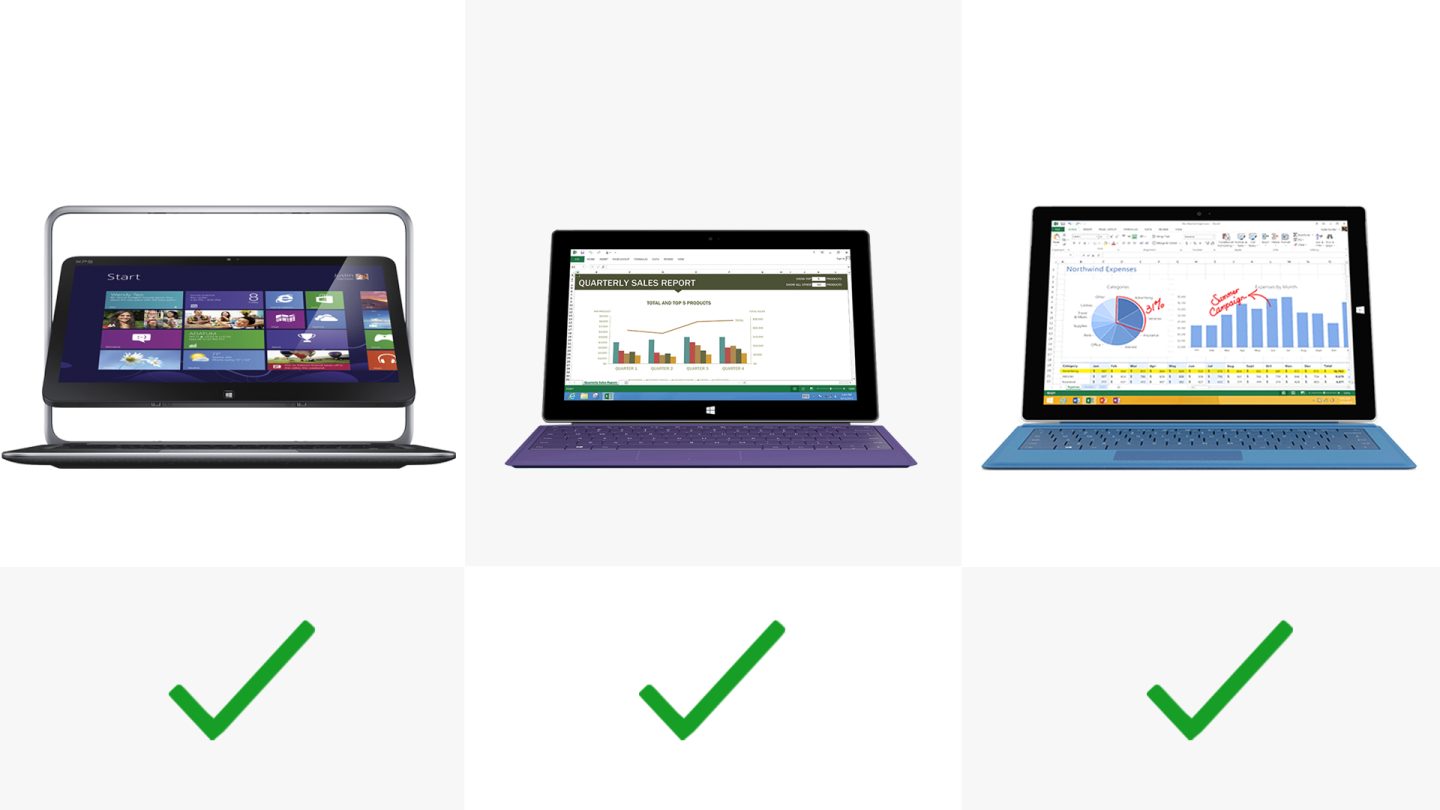
Most of the 2-in-1s offer a single USB 3.0 port, while the Dell XPS 12 goes one better with two of the high-speed ports.
Video out



Each machine offers some kind of video out option (HDMI, Micro HDMI or Mini DisplayPort) so you can mirror your PC's screen on a TV or full-sized monitor.
Ethernet
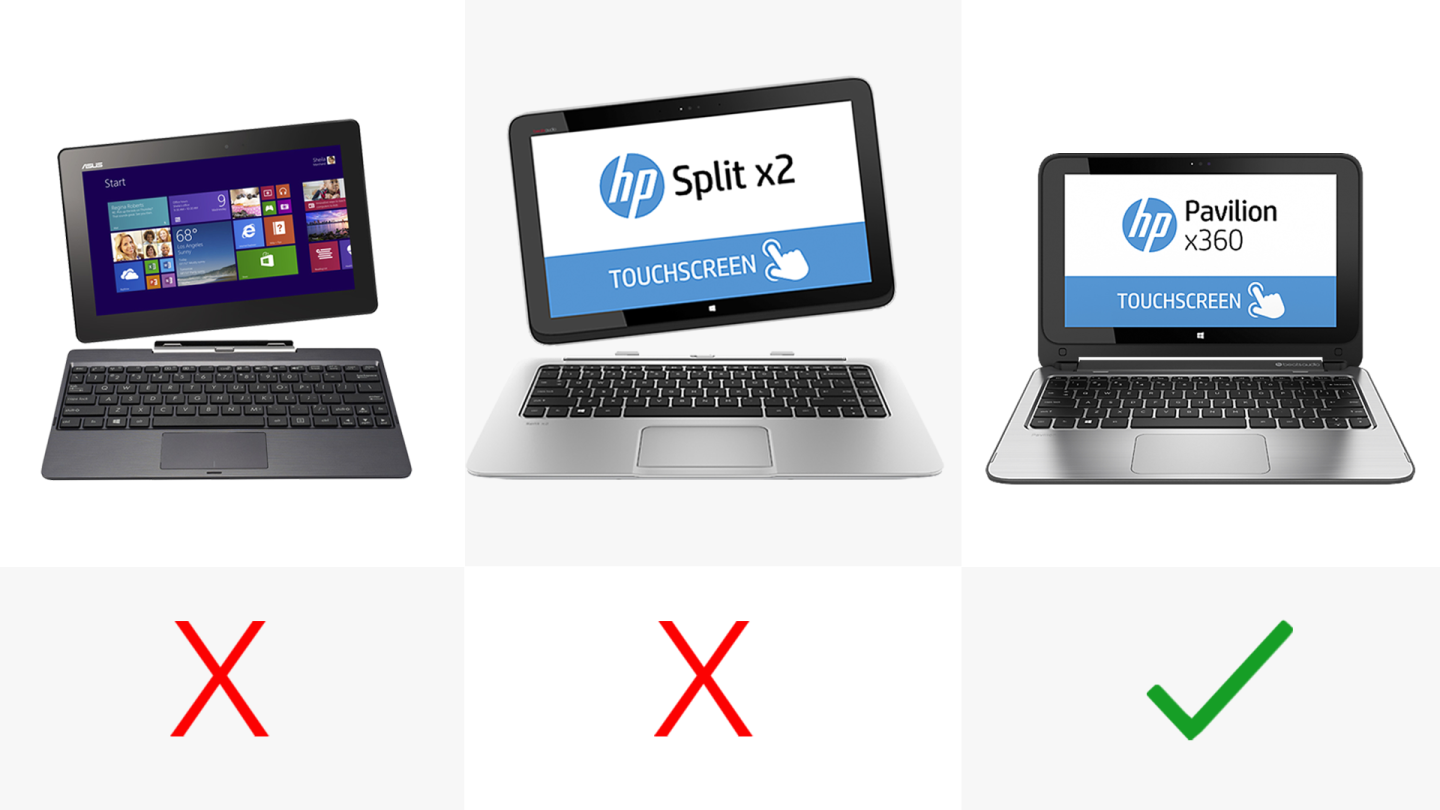
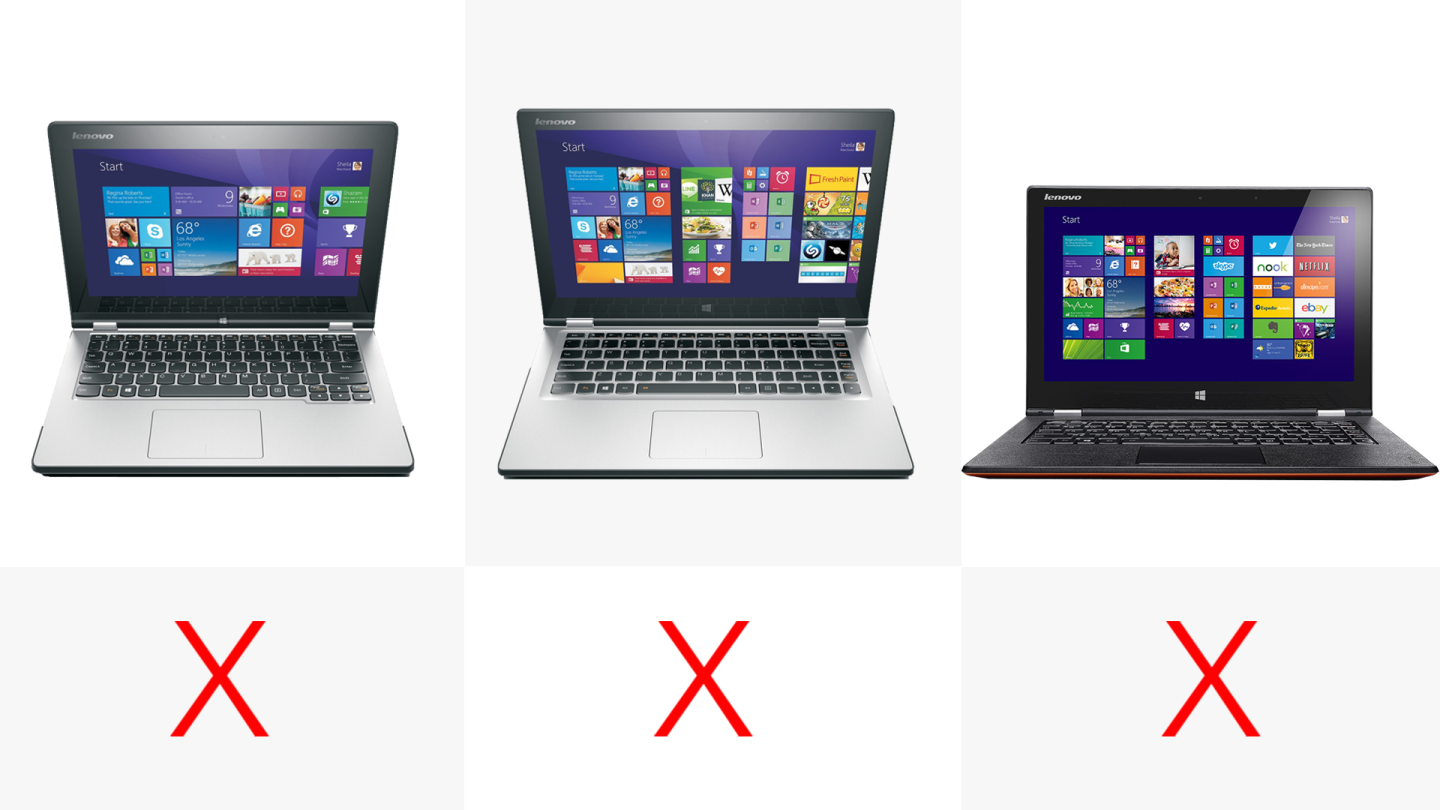
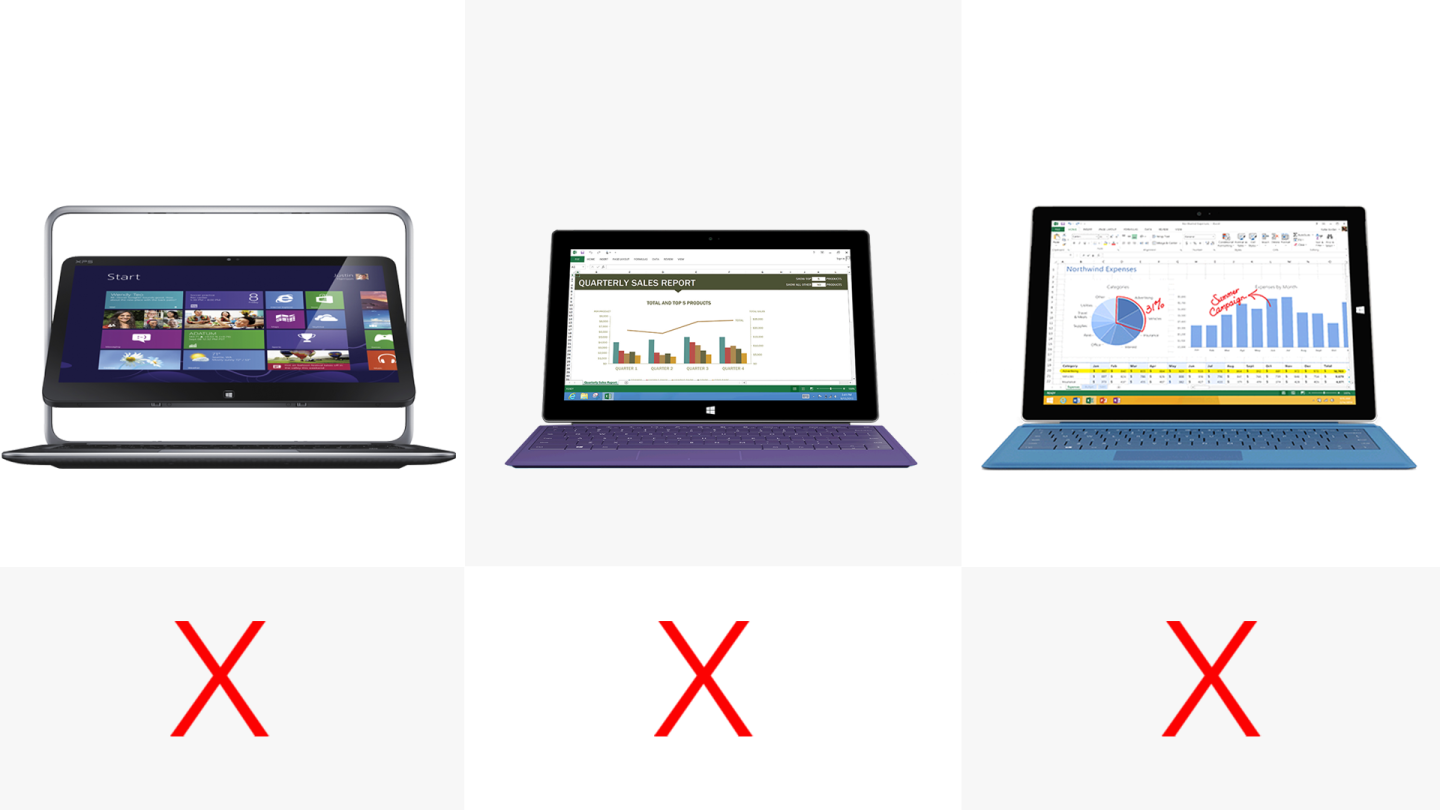
Only the HP Pavilion x360 offers an Ethernet port. You'll need a USB to ethernet adapter to connect ethernet cables with the other machines.
Card reader
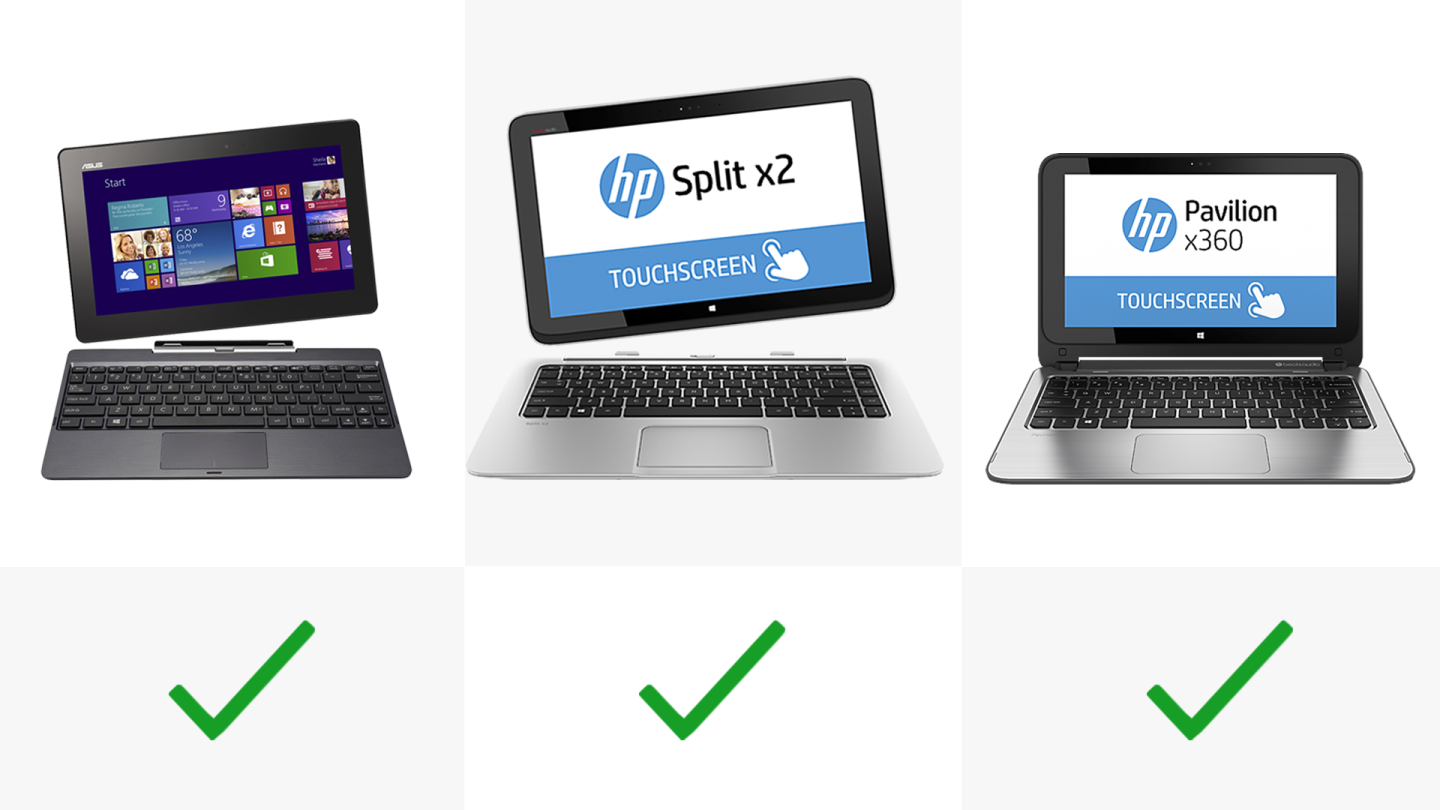
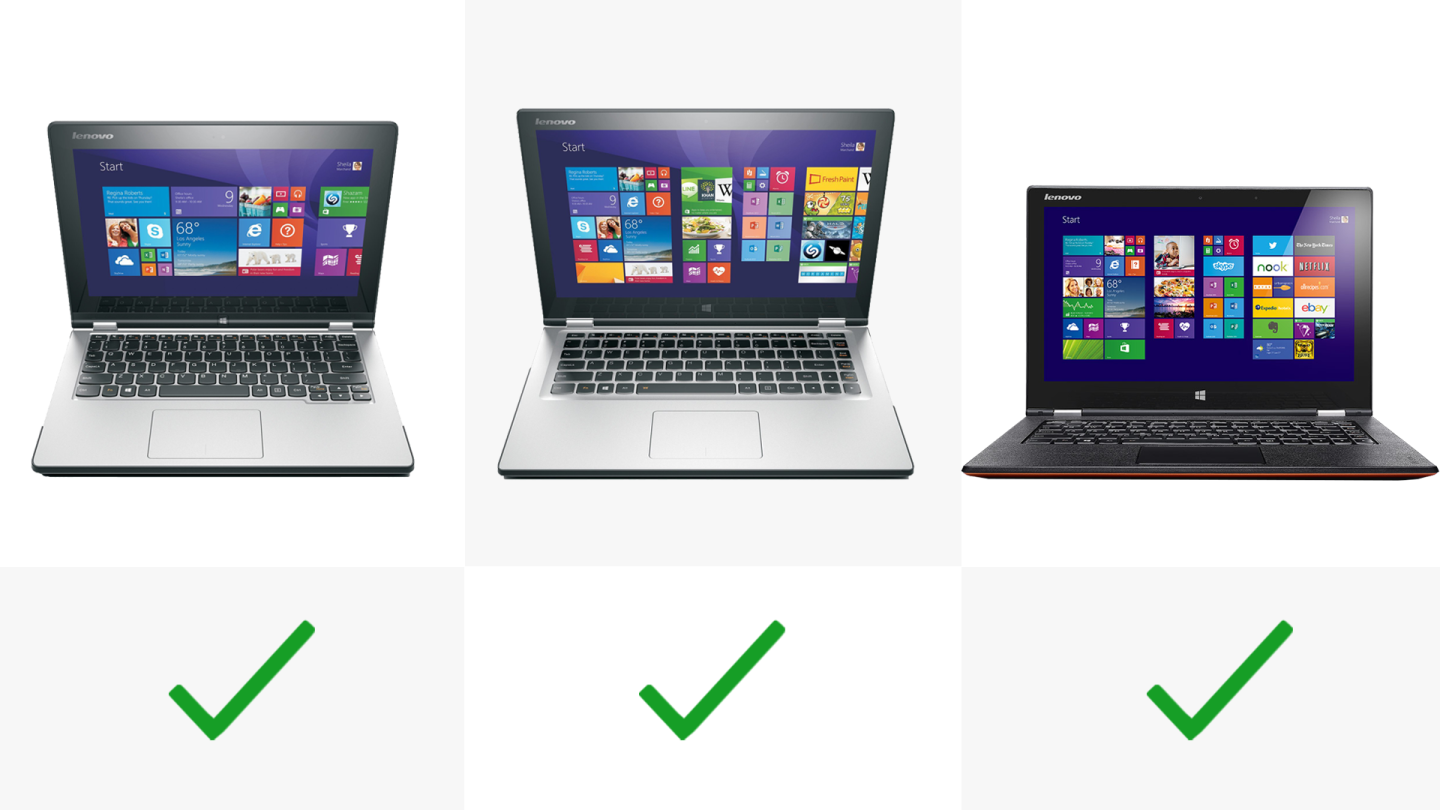

With the exception of the Dell XPS 12, every system here is fitted with some form of media card reader. The Asus Transformer Book T100, Surface Pros 2/3 and HP Split x2 offer microSD slots, while the HP Pavilion x360 and Yoga series opt for larger SD card readers.
Battery
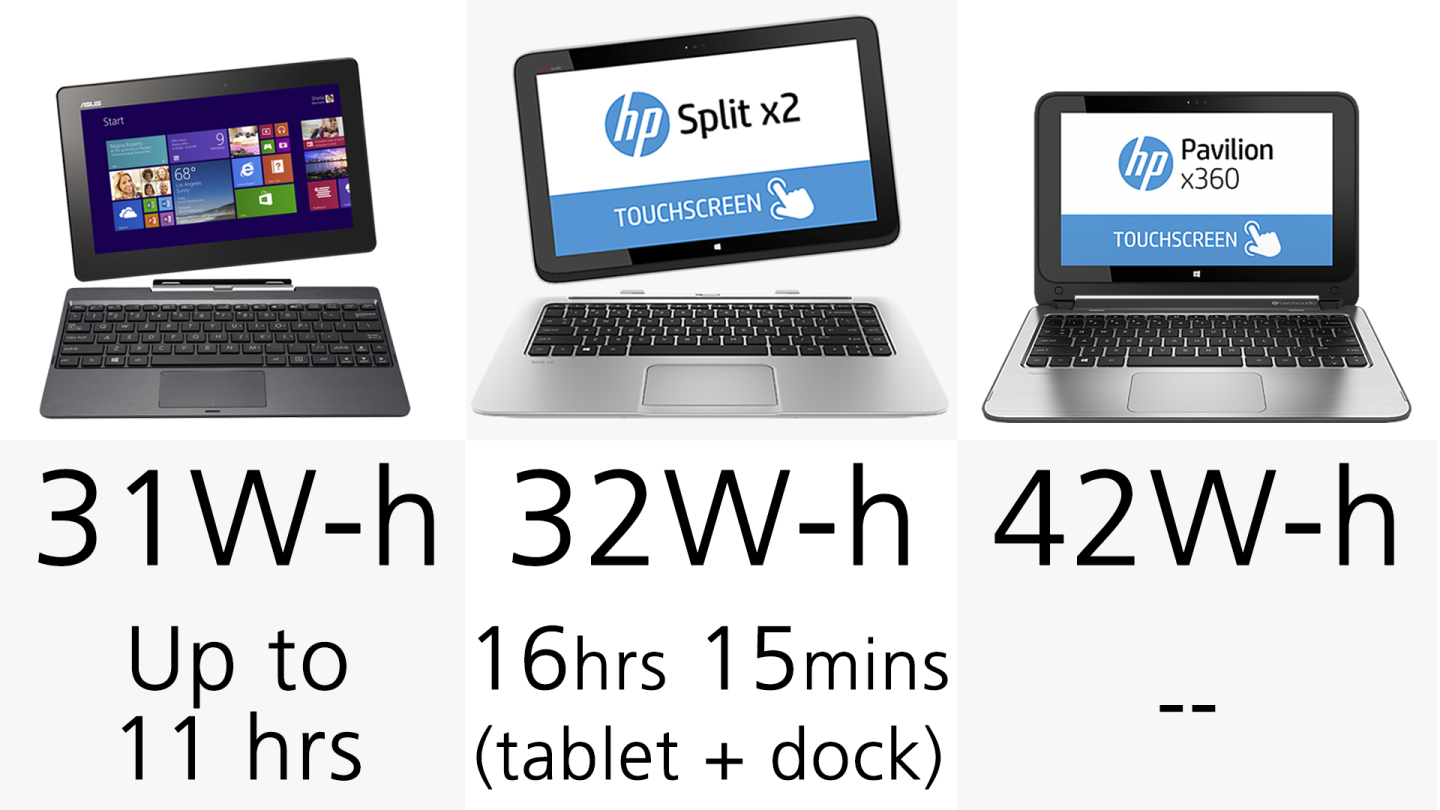

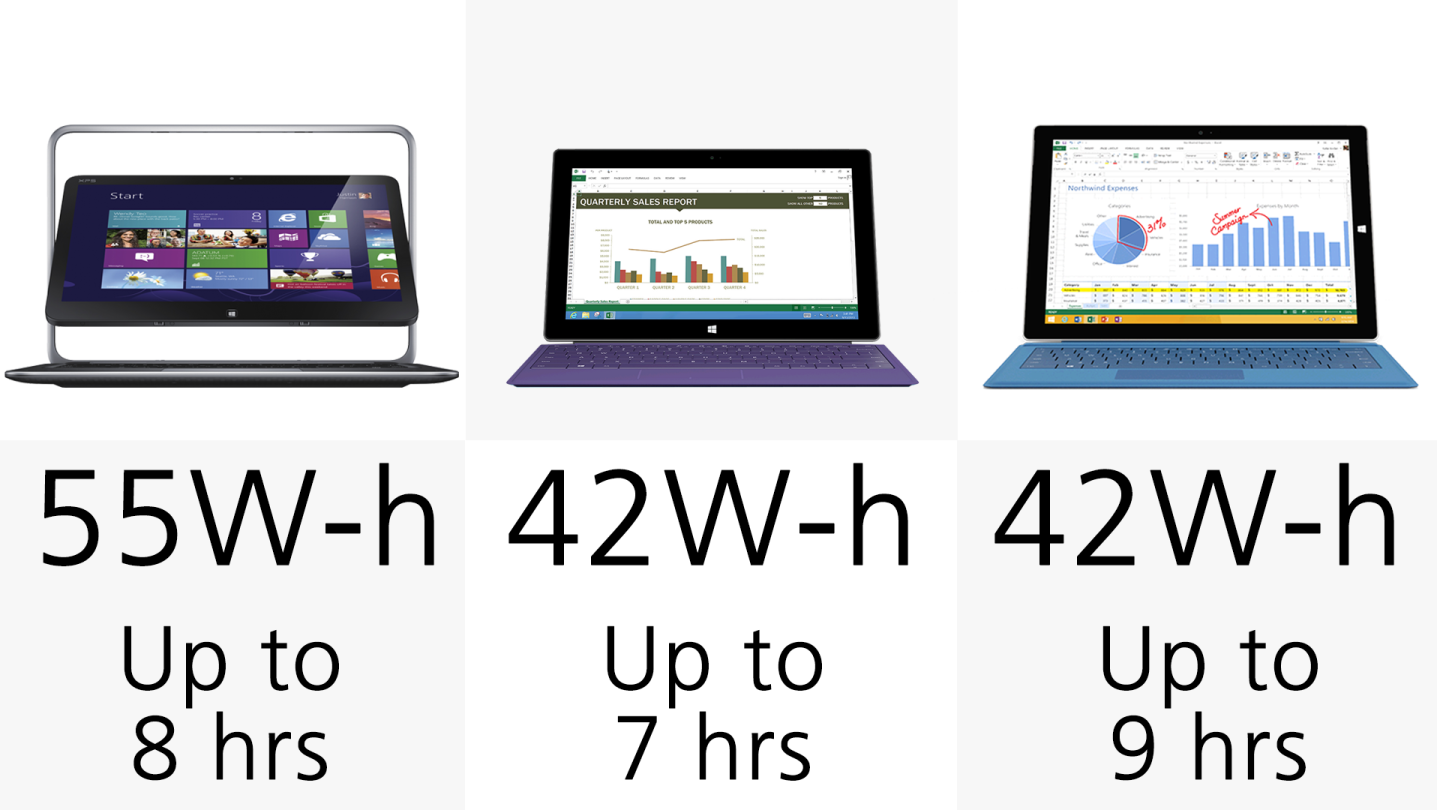
While capacity varies significantly here, the larger numbers don’t necessarily translate to better battery life. Factors such as component selection and display resolution have a significant impact on how long a machine will last on a single charge.
Given that most of the machines here offer some degree of component customization, it’s difficult to pin down specific battery life stats, despite what manufacturers might say. Manufacturers also tend to have different methods for testing the longevity of their systems, further compounding the issue.
The Surface Pro 2 is unique among this group, as you can buy a keyboard cover that actually extends its battery life. You can hit up our review of the Power Cover for more (and note that it isn't compatible with the Surface Pro 3).
Software


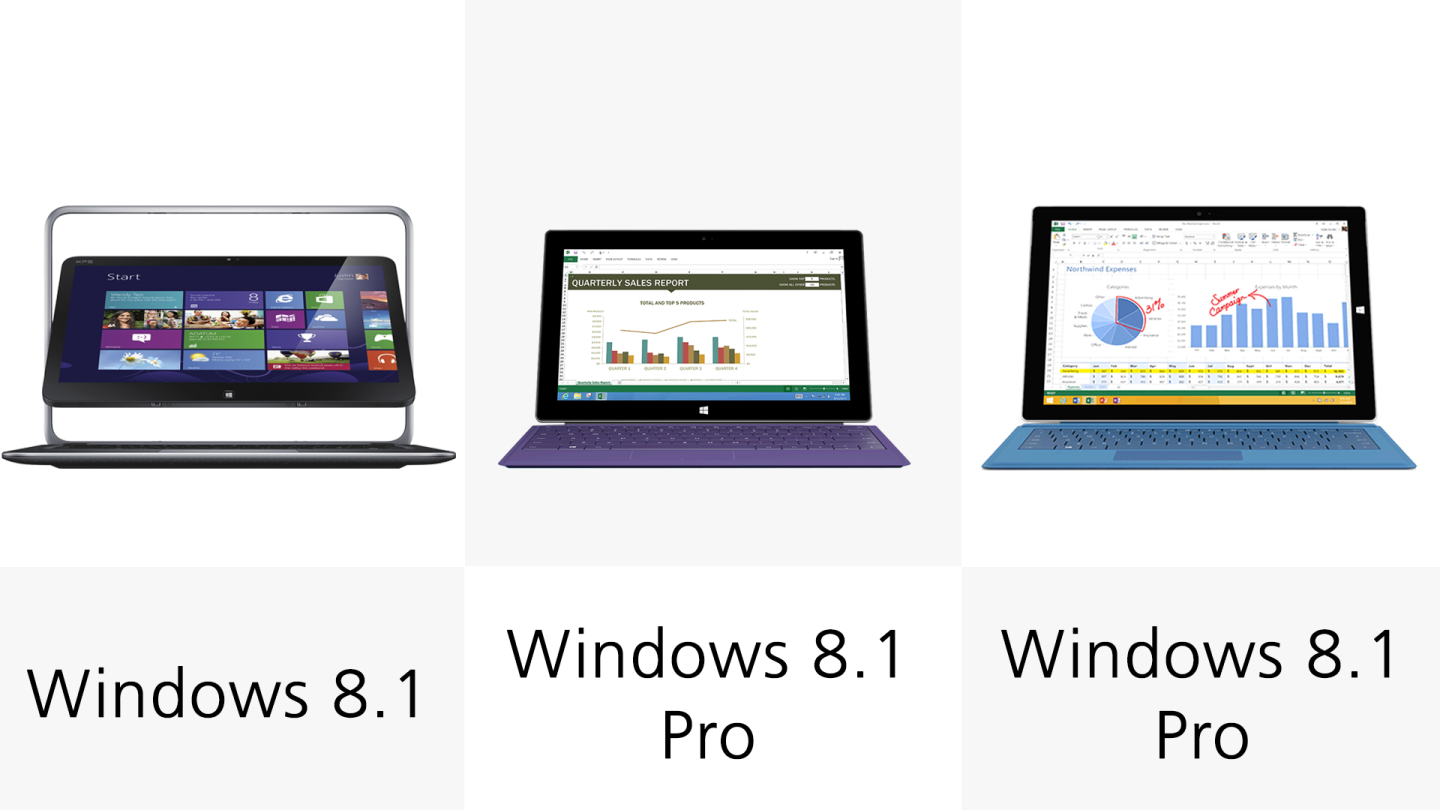
All the systems on offer here run either Windows 8.1 or 8.1 Pro. The operating system's dual nature, featuring both desktop and tile-based UI, makes it well suited to the hybrid form factor.
Digitizer-based stylus



While you can use a standard capacitive (simulating finger touch) stylus with any of these systems, only the Surface Pro 2 and 3 support digitizer-based styluses. They include them in the box.
Digitizer-based styluses are pressure sensitive, making the experience of using one closer to that of using real pen or pencil. You'll also see a cursor that moves just by hovering the stylus over the screen, something capacitive styluses can't replicate.
Release
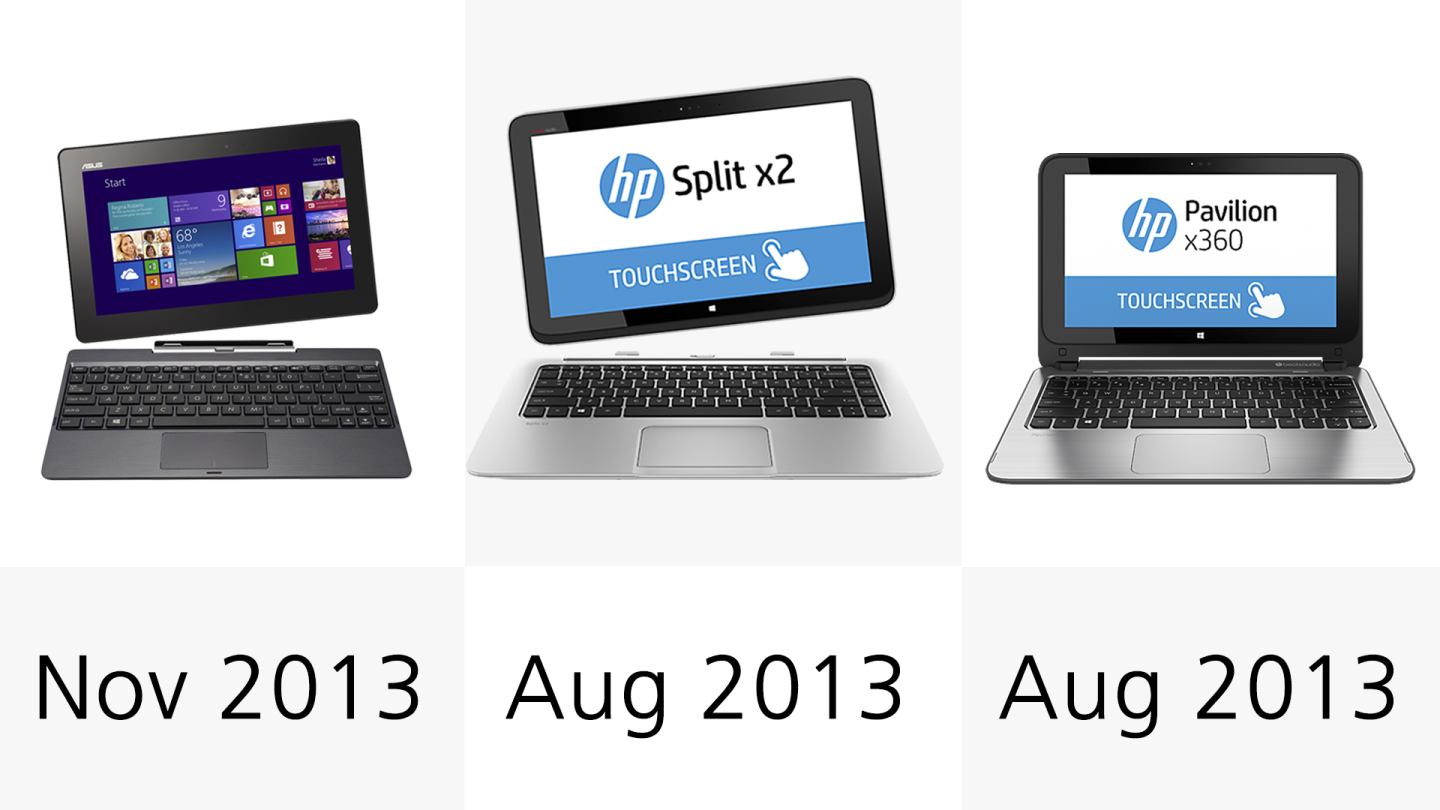

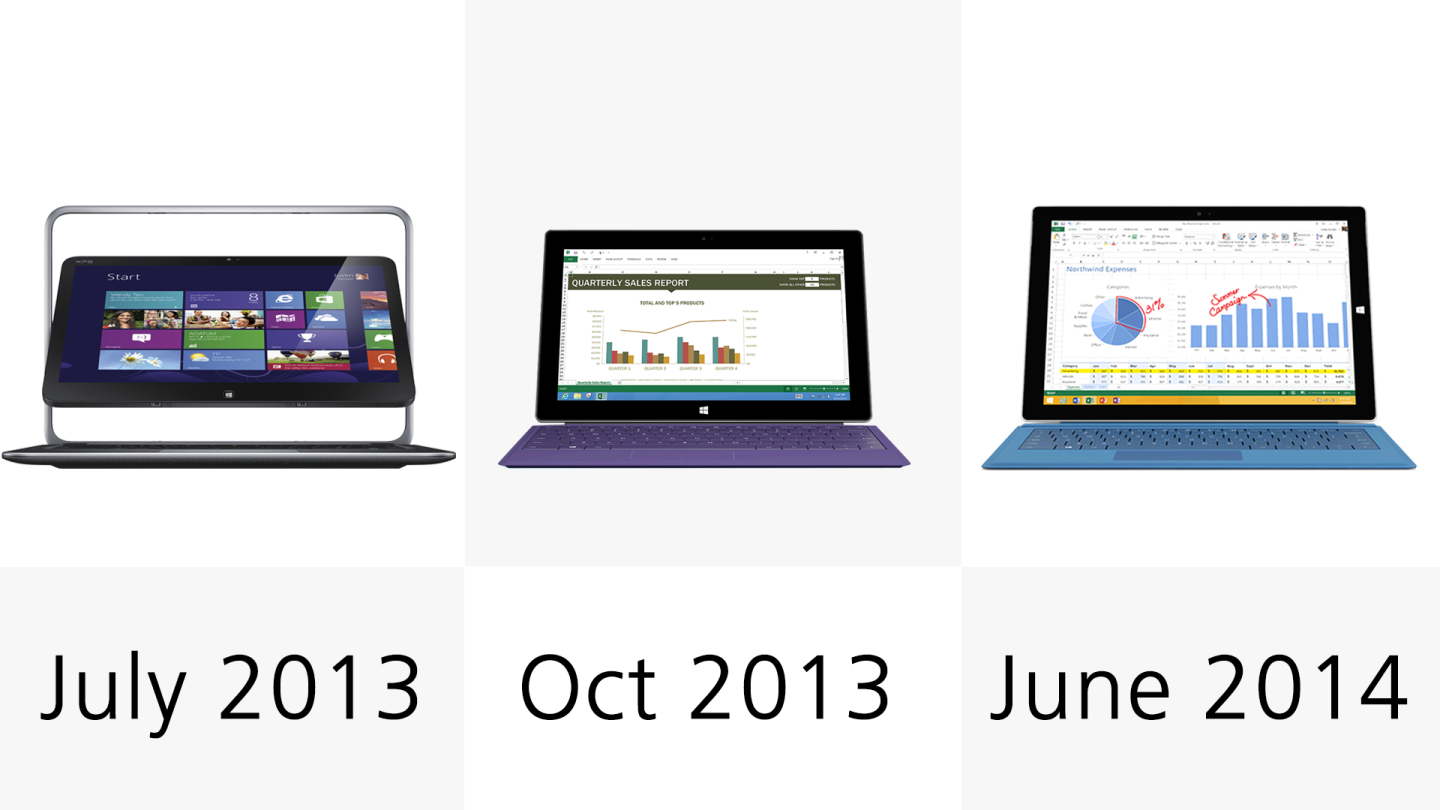
The Surface Pro 3 is the newest system here, and isn’t even available yet in Europe.
Starting price
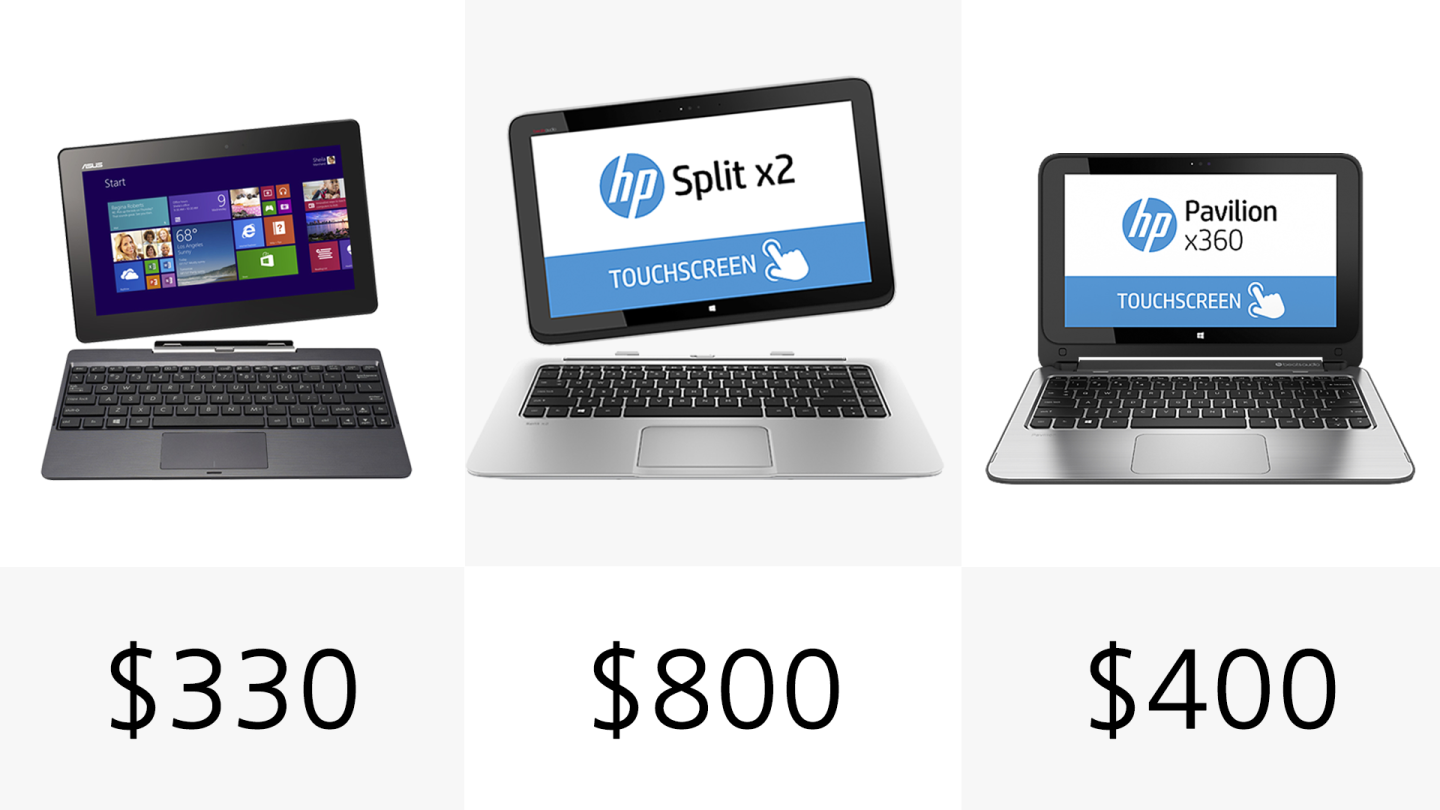
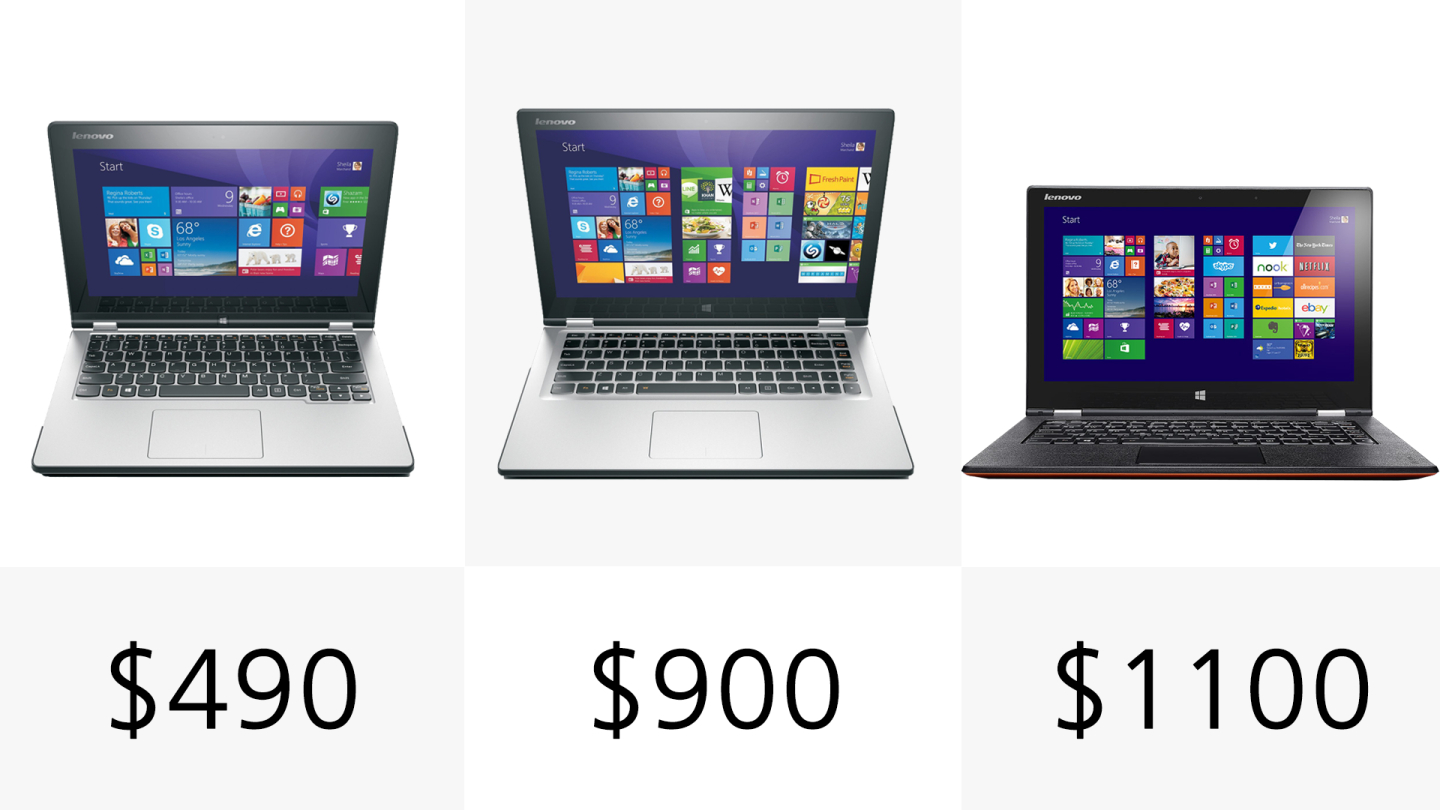
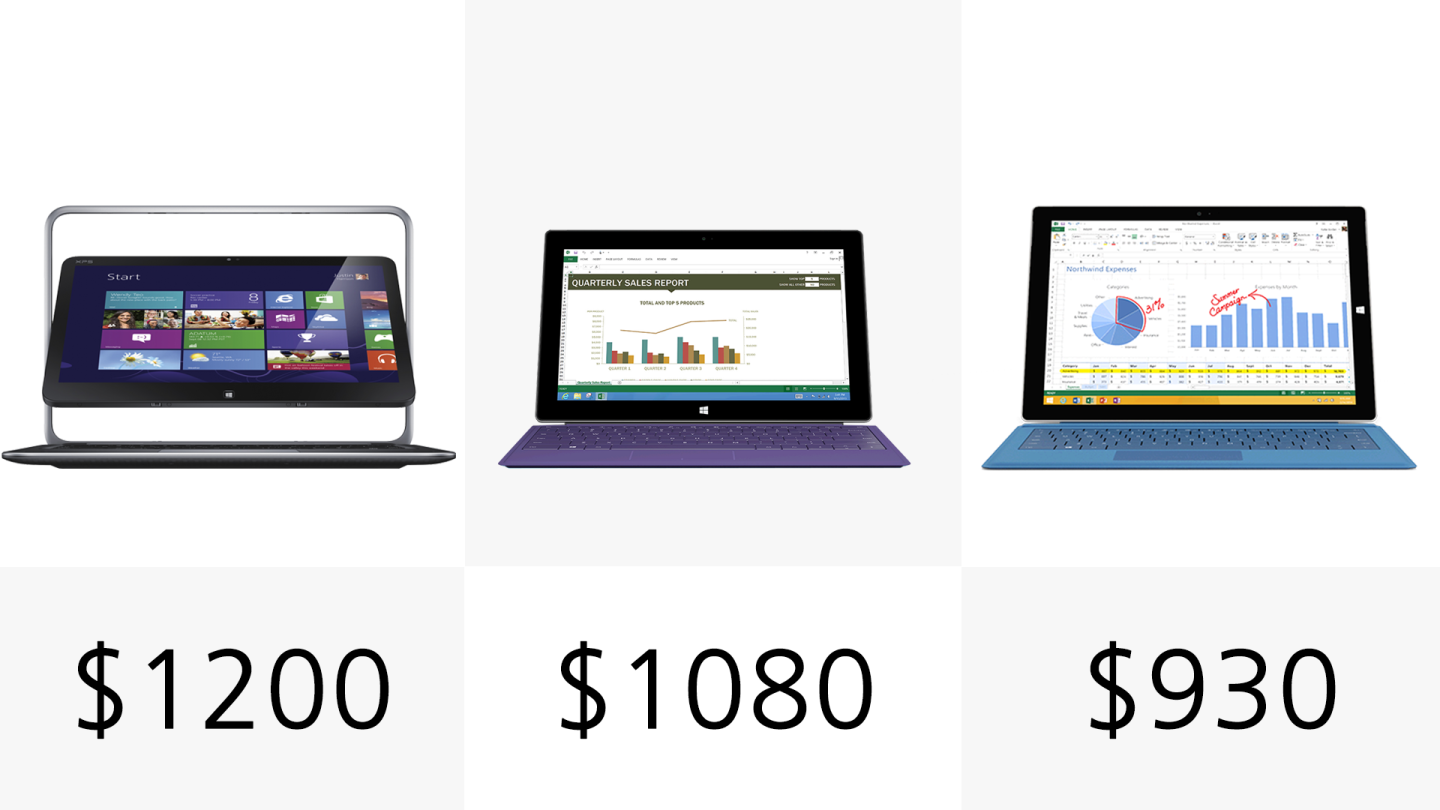
When it comes to asking price, there’s a huge amount of variation in these systems. The numbers here are starting prices, so it's possible to pay a fair bit more for the top end configurations of some of the hybrids. Also note that, in cases where the keyboard cover is sold separately, we're showing the combined price for device and cover.
The Asus Transformer Book is the cheapest device, though its low-end price is echoed by its average specs. The Pavilion x360 is the second cheapest device on offer, but once again suffers from some uninspiring internals. The Lenovo Yoga 2 Pro, Dell XPS 12 and the two Surface Pro devices are the most premium systems on offer, and have price ranges to match.
The Yoga 2 Pro and Surface Pro 3 offer the sharpest displays, and can be fitted with high-end processors and storage choices. On the spec sheet, and in my opinion, they’re the best systems on offer here, but they also come at a significant price premium.
Each device here will likely have its audience, and most are easy to recommend at least in some respect. If you’re thinking about picking up a Windows 2-in-1, then the best thing you can do is decide which devices have the right combination of features, specs and price points that you’re looking for, and then head down to your local electronics store. It's always good to get your own hands on these to see how they feel to use, because ultimately, personal preference is key.










































































